

2025 Ink
The time has come,' the Walrus said, To talk of many things: Of shoes — and ships — and sealing-wax Of cabbages — and kings — And why the sea is boiling hot — And whether pigs have wings.'
Given the walrus’ ability to speak about such a wide range of subjects, he’d undoubtedly have made a success if he’d been a Churcher’s student. He may have been more interested in shoes and ships and sealing-wax than Shakespeare, cakes and kelp forests, but he’d undoubtedly bring a strong hinterland of scholarship to the school’s vibrant academic circles.
And he’d no doubt appreciate the preponderance of poetry in these pages which, along with the Art and D&T images, reflect the creative talents and aspirations of the students. A single line of verse can evoke powerful imagery, stir emotions, and even change the way we view the world, and it is a pleasure to include them here.
As always, I am indebted to the students who have put work forward to be published in this magazine, and also to the teachers who have supported them in their endeavours.

The ethics of neuroscience
Upper Sixth Annabel Steven
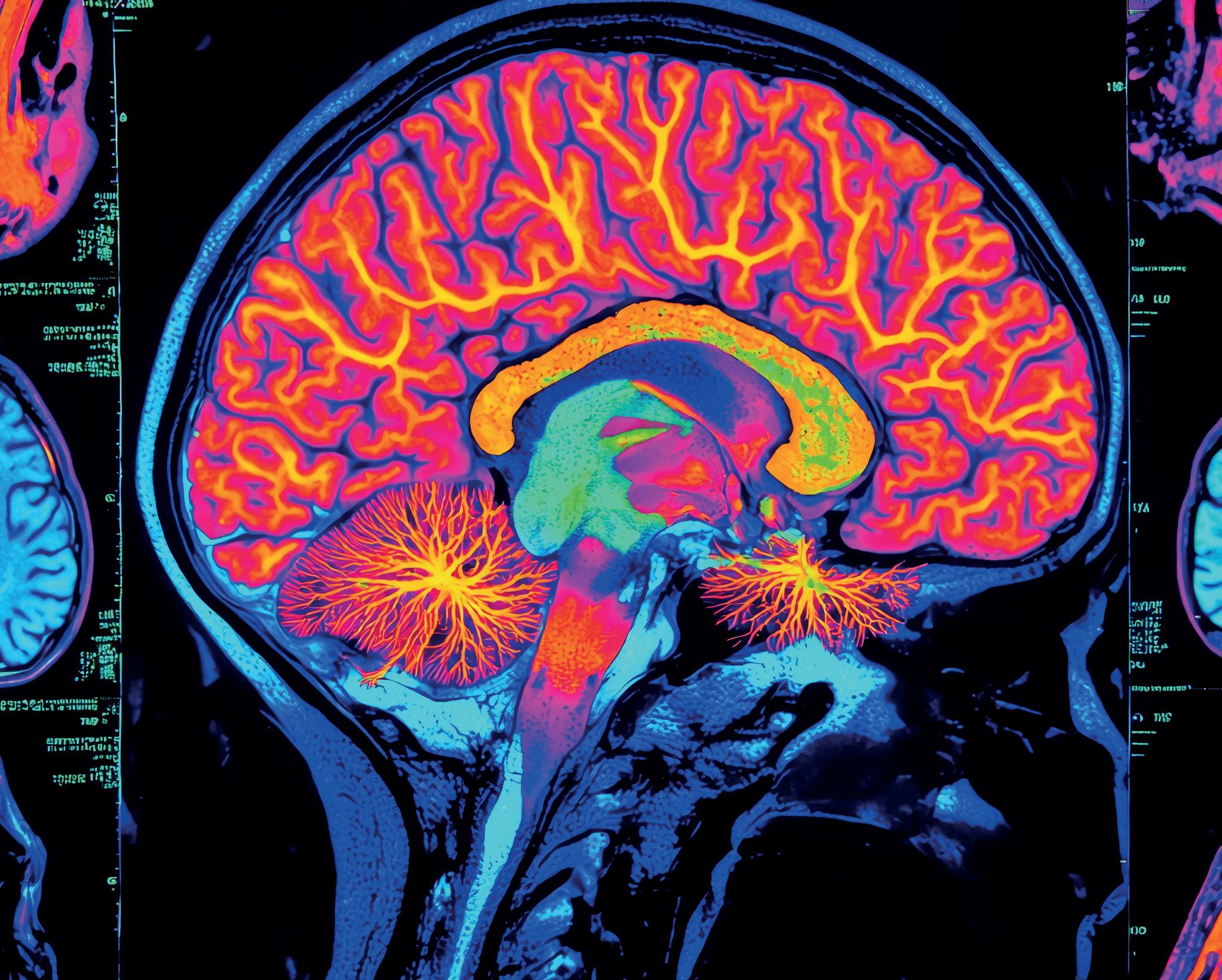
Neuroscience is the study of the brain and nervous system. In neuroscientific studies, it is important to consider whether the significant ethical implications are justified by the practical applications gained. Is what scientists discover worth what they must do to humans and animals to achieve these exciting new developments? It must also be carefully considered how these developments may be misused, leading to further inequalities in society.
One exciting development is in the discovery of brain organoids, which can be used to find and test treatments. These are stem cells that have organised into brain-like structures that respond physiologically and molecularly to drugs, in a similar way to humans. This can enable treatments, such as those for Alzheimer’s, to avoid being tested on post-mortems or live patients, reducing these ethical implications. Treating Alzheimer’s could save £26 billion a year, allowing for more funding for further developments. The
brain organoids are not yet capable of a higher level of thinking nor are they conscious, reducing any additional potential ethical implications. However, it would have to be considered how further discoveries are managed, because if they are developed in the future into tissue transplants, there would be huge ‘ethical implications around this. It must also be considered how the use of people’s stem cells are managed and used; this is because there are issues surrounding valid consent – it’s hard for the scientist to get consent for every possible use, so the donor needs to trust the scientist to be responsible with them and not misuse them. As well as that, brain organoids can be planted into rats and mice to make them live longer so we can test treatments on them, but there are huge ethical implications around this as it can be hugely misused and its unethical to the rats as it causes them to feel stress. So, the discovery of brain organoids has huge ethical implications.
An area of neuroscience where it is very important to consider how the technologies are managed is in neuromarketing, because it allows firms to access consumers’ inner thoughts. Wilson, says that the commercial integration of neuroscience allows advertisers to deliver individualised messages and remove consumers’ free will when buying goods. So, these developments need to be ‘carefully managed’ so they can make informed decisions when shopping. There has also been the creation of eye tracking technology, which is very beneficial; it removes social desirability bias as it tracks what really catches the consumer’s eye. As well as this, according to Sands, a Volkswagen advertisement increased website traffic by 50%, increasing sales. Whilst both have long term economic benefits, they further reduce consumer free will and have the potential to be very misused, so there needs to be guidelines in place to carefully manage these discoveries. Nelson, also says that neuromarketing

firms do not manage their new and exciting discoveries well, because 5% of these have incidental findings and they have no legal obligation to inform people. This is a huge ethical implication of the discovery of neuromarketing; for example, they could find someone who has a brain tumour and not tell them.
A final new and exciting discovery is where neuroscience has allowed for the treatment and prevention of crime. Raine’s research discovered that different areas of the brain are affected in criminals. For example, damage to the prefrontal cortex led to impulsiveness and a loss of control. These findings are valuable because people with these brain abnormalities can be treated before they commit a crime. But there are huge ethical implications again, and it does need to be closely managed because it could
lead to labelling people for their brain and not for their actions and giving them compulsory treatment. As Farah says, if the criminal justice system uses neuroscience to alter criminals’ behaviour, it removes their free will and individual freedom, which is a “significant ethical implication”. There has also been the exciting discovery that neurotransmitter abnormalities lead to crime. For example, Cherek et al found that prisoners who took SSRIs had reduced impulsiveness and aggression. So, this discovery can make society safer if crime is
Neuroscience has allowed for the treatment and prevention of crime.
reduced. But this also needs to be carefully managed and used because SSRIs have side effects, such as suicidal thoughts, that are also big ethical implications.
Overall, in order for future exciting discoveries to have minimal ethical implications, it is vital that ethical guidelines constantly evolve to keep up with ever-changing technology. The applications (such as new treatments that save many lives) gained from the ‘exciting discoveries’ do largely outweigh the few ethical costs. The future of brain organoids is especially important to consider, as huge ethical implications will arise if they evolve and tissue transplantation becomes a possibility.
The role of marine microbes vs kelp in carbon sequestration
Clement Siu
Lower Sixth

The ocean is Earth's largest carbon sink, absorbing and storing the atmosphere’s carbon in the deep ocean through biological and physical mechanisms. It is estimated to contain about 40,000 billion tons of carbon, which is 50 times more than the amount in the atmosphere. Excess carbon dioxide (CO2) in the atmosphere contributes to the supercharging of the greenhouse effect, causing global warming. Additionally, when CO2 in the atmosphere dissolves in seawater carbonic acid (H2CO3) is formed, which then breaks down into hydrogen ions (H+) and bicarbonate (HCO3-). The increase in H+ ions decreases the pH of the water and hence causes ocean acidification. The increased acidity affects the ability of marine organisms to build and maintain shells and skeletons due to them being predominantly composed of calcium carbonate, which reacts in the presence of an acid. This can then disrupt the delicate balance of ecosystems and food chains. Hence, the ocean’s ability to absorb and more importantly store CO2 makes it a potential solution to limit climate change and mitigate its impacts. Both marine microbes and kelp naturally play a
role in carbon sequestration, but through different mechanisms and each has its own advantages and disadvantages.
Kelp appears to be an ideal solution for carbon sequestration due to its rapid growth.
Kelp is a type of brown algae belonging to the Protista Kingdom that thrives in the ocean despite reduced light intensity, due to its efficient photosynthetic adaptations. Although visually similar, they are completely unrelated to terrestrial plants. Its holdfasts, blades, and stipe are specialised structures that are adapted to the marine environment. The holdfast acts as an anchor against the strong currents in the ocean, but unlike roots, it does not absorb water or nutrients. Instead, all parts of the frond take in essential resources from the surrounding water. The holdfast is connected to a stipe, a strong but flexible structure that provides support for the leaf-like blades. Like plant leaves, these blades capture sunlight for photosynthesis. Larger kelp may also contain pneumatocysts – bladders that are filled with waste gas to keep the frond buoyant, ensuring the blades stay near the surface for maximum sunlight exposure.
The way kelp sequesters carbon lies in its life cycle. Its metabolic reactions
involve photosynthesis, converting CO2 into organic matter, which is stored in its biomass. Upon death, it sinks to the bottom of the ocean floor, effectively removing it from Earth’s atmosphere. Kelp forests can capture up to 20 times more carbon dioxide than terrestrial forests and are positioned further from the coast than mangroves and seagrass. Therefore, the carbon trapped in kelp forest detritus is more likely to sink down to the deep sea and therefore less likely to return to the atmosphere, making them the ideal organisms for carbon capture in the ocean. Furthermore, under the right conditions, enough kelp can accumulate in a small area to form a kelp forest. Their substantial density and height significantly modify coastal environmental conditions, reducing wave action, settling sediments and cycling detritus and nutrients, which provides a habitat for thousands of species of invertebrates, fish, and other algae, therefore increasing the marine biodiversity in the region.
Kelp appears to be an ideal solution for carbon sequestration due to its rapid growth, ease of cultivation, and minimal resource requirements. It does not require pesticides, freshwater, or fertilizers and does not compete with land designated for livestock or food production. Kelp detritus also decomposes slower than other sources of organic carbon in the
Kelp forests like this can be extremely effective in carbon capture
ocean, such as zooplankton casings, faeces, phytoplankton debris, and bacteria due to structural compounds and phenols in kelp which make it more resistant to decay. Additionally, kelp detritus can continue photosynthesizing in shallow waters when enough light is present, further slowing its decomposition. However, global warming can impact kelp forests' ability to sequester carbon. Organic matter breaks down and returns nutrients to the environment more quickly in warmer, low-latitude regions than in cooler, high-latitude areas. Therefore, as ocean temperatures rise from climate change, more kelp detritus decomposes back into inorganic carbon before reaching deep ocean sinks, decreasing the chance it has for long-term storage in the deep ocean and shortening the time it takes to re-enter the atmosphere as CO2. Instead, it becomes a nutrient source for coastal food webs with the carbon eventually returning to the atmosphere rather than sequestered in the deep ocean.
On the other hand, marine microbes use a completely different mechanism to sequester carbon. ‘Marine microbes’ is an umbrella term for all the microorganisms that live in a marine environment. This includes microbes living in both saltwater and freshwater sources. In order to sequester carbon, they carry out a mechanism of carbon transfer known as a biological carbon pump (BCP), which can be divided into 3 phases. Phase I occurs in the euphotic (sunlit) region of the ocean, where phototrophic plankton convert inorganic carbon into organic compounds via photosynthesis. Some plankton combine calcium and dissolved carbonates to form a calcium carbonate (CaCO3) protective coating. When they die, they either stay in the euphotic zone and get recycled in the nutrient cycle or they aggregate with other particles and sink to the ocean floor, which is the Phase II of the BCP. The aggregation of particles not only increases the sinking rate but also reduces the chance of decomposition and making it to the ocean floor. Finally, in Phase III, the organic compounds are decomposed, either on the way down or on the ocean floor, and
then remineralised and stored in sediment. This effectively captures the carbon in the sediment and traps it for millions of years, ultimately lowering the volume of atmospheric CO2. It is important to note that this process is completely natural. However, scientists have been conducting research on how to increase the rate of carbon sequestration by manipulating these microbes.
Scientists have been looking into mixotrophic protists – protists that combine two or more energy acquisition methods. Mixotrophic protists can both photosynthesise and feed on other organisms, unlike phytoplankton, which completely relies on photosynthesis as its only energy source. By having multiple modes of acquiring energy, this microbe can survive in parts of the deep ocean deprived of dissolved nutrients and sunlight and therefore would be inhabitable for most phytoplankton. This means that Phase I of the BCP could potentially occur in a deeper region of the ocean that lacks sunlight. The mechanism that the protists use to feed on their prey (other microbes) and their structure highlights their role in the carbon capture process. Most marine protists have a carbon-rich exopolymer made of mucus that is made via photosynthesis. This mucus layer attracts and captures its prey, which is then immobilised and eaten. Excess nutrients are then discarded back to the exopolymer layer, increasing its mass and causing it to sink and join Phase III of the BCP. If the population of these microbes could somehow be controlled, it could open a whole avenue of carbon capture possibilities.
Scientists have also been looking into manipulating viruses to alter microbial activity in the BCP. A study conducted by the Tara Oceans Consortium determined that the presence of viruses in the ocean was related to the sinking of carbon. They thought that when carbon-processing microbes got infected by a virus it helped it join onto larger, sticky aggregates that drop to the ocean floor. By finding and

engineering a virus that has the largest potential to cause marine microbes aggregates and hence form the heaviest organic form that will sink to the ocean floor, we can effectively increase the rate of carbon sequestration in oceans.
Alternatively, bacteria can also be used to accelerate carbon capture. Peter Agbo, a scientist from Berkeley Lab has proposed a scheme involving bacteria and a bioreactor. Essentially, it aims to convert CO2 to limestone (CaCO₃) through the use of seawater (which naturally contains a large amount of calcium). This process is natural to a certain extent, but the reaction normally occurs at a very slow rate. The variable that controls the rate of reaction in seawater is a natural enzyme called carbonic anhydrase that catalyses the reaction. It hydrolyses CO2 to form bicarbonate (HCO3-) and H+ ions. By manipulating the bacteria to produce the carbonic anhydrase, as long as they have food they will continue growing and produce enough enzyme. However, feeding the bacteria long-term can be expensive; hence, scientists are currently developing a genetically modified bacterium that is photosynthetic and an exoenzyme: large amounts of carbon anhydrase are produced on its surface. Since the enzyme is produced on its surface, it makes it easier and cheaper to access. This can then be put into a bioreactor – when seawater is put into the reactor, air is mixed in, and the bacteria converts it to limestone.
In conclusion, whilst both marine microbes and kelp can contribute to carbon sequestration, both organisms are needed for carbon to be effectively captured in the deep sea. Although kelp generally has a higher potential for large-scale carbon capture due to its rapid growth rate and ability to absorb large volumes of CO2 from the atmosphere through photosynthesis, marine microbes primarily capture carbon through the breakdown of organic matter released by other organisms (including kelp detritus), playing a key role in the longterm storage of carbon by locking them in sediment. Therefore, it is difficult to determine which is more effective, as the entire carbon sequestration process requires both mechanisms to work.
Carbon sequestration facilities are almost a necessity in the future in order to process all the excess carbon we have released into the atmosphere since the Industrial Revolution, and it shall be interesting to see how a combination of these organisms may play a part in combating climate change. Nonetheless, it is important to continue to reduce our current carbon footprint in order to protect the marine habitats living today.
Marine bacteria
How has evolutionary psychology influenced architectural design?
Edward Lewis
Upper Sixth

Evolutionary psychology is the theory that many of our psychological tendencies are based upon evolutionary pressures from our past. Humans in the past faced a multitude of survival challenges, and their behaviour in response to these challenges have kept them alive. This is thought to have influenced modern day human behaviour and preferences, and has created certain primal fascinations with objects such as fire, and phobias towards dangerous animals, such as snakes or spiders. These preferences can be seen in our architecture, and through architects using them to enhance our architectural designs, we can create spaces that improve the wellbeing of society.
One theory, ‘Prospect-refuge theory’, developed in 1975 by Jay Appleton, describes how humans prefer to be in spaces where they feel that they’re hidden
but also able to observe their surroundings. For hunting prey, humans needed to be able to see their prey without giving away their location, as well as being concealed from the sight of predators. Therefore, in order to achieve success in hunting and survival, humans began inhabiting places that offered a perfect balance between prospect (‘The ability to observe opportunities or foresee dangers within the environment’), and refuge (‘The ability to hide or remain concealed from danger’). For example, a cave with an elevated vantage point that overlooked a valley would’ve allowed humans to be on the lookout for prey to hunt, as well as concealed them from any predators. This primal need is therefore thought to be ingrained in our psyche and is why architects design places with large windows or balconies (prospect), and with hidden areas, such as alcoves or courtyards (refuge). For
example, Grahn and Stigsdootter (2010) looked at how individuals respond to different park environments. After surveying 953 Swedish participants, they found that people consistently preferred parks with a combination of open green spaces alongside enclosed and protected spaces - which perfectly reflects the balance between prospect-refuge. These spaces made individuals feel safer and also enhanced their mental well-being. This theory can be seen through the design of ‘The High Line Park’, in New York City. This is because it provides elevated views of the city’s landscape and the Husdon river (prospect), and includes sheltered nooks with seating areas (refuge). This evolutionary bias behind the park’s design perhaps accounts for why the park is so highly successful and appreciated by both locals and tourists in this area.
Pyramids Of Giza incorporating symmetry
Another theory seen in architectural design is the ‘Biophilia Hypothesis’ by Edward Wilson. Wilson hypothesised that humans feel an innate affinity for natural environments, thought to be rooted from the fact that our evolutionary ancestors thrived in natural environments where their survival depended on their understanding of nature. Our psychological well-being is closely linked to interactions with nature because humans who were able to navigate and interpret natural stimuli in their environment had higher survival rates. Therefore, traits such as appreciation of the landscape or paying close attention to nature may have been naturally selected. This hypothesis is supported by research, conducted by Ulrich, in 1984, whereby he monitored the recovery of patients who had undergone gallbladder surgery. He compared the recovery rates of those who were in rooms with a view of nature and those in rooms with a view of a brick wall. Ulrich found that the patients with a view of nature experienced three major advantages: shorter hospital stays, fewer postoperative complications, and they required fewer doses of pain medication. The implications of this research hold immense potential to improve society through how medical facilities are designed by architects. This is particularly important in the UK, where the NHS is underfunded, has shortages of doctors due to strikes, and has a long backlog of patients due to COVID-19. By improving patient
recovery through solutions as simple as the architectural design behind hospitals, it would help to indirectly relieve some of these pressures on the NHS.
Symmetry is also thought to be an evolutionary bias that is heavily utilised in architecture. This can be seen through the research of Gillian Rhodes et al (2001), on symmetrical preferences. This study involved showing participants images or faces or patterns that varied in symmetry and then rating which one they favoured. It was found that there was a ‘robust preference’ for highly symmetrical patterns. The researchers suggested that the evolutionary root behind this could be linked to the fact that symmetry in faces and bodies is linked to genetic health and might’ve served as a good indicator of genetic fitness, making certain individuals more appealing in mate selection and other contexts. Because this preference for symmetry seemed to be applied in other contexts outside of human attraction, it suggests that perhaps this is why humans feel a strong attraction to buildings that incorporate symmetry. Perhaps the influence of symmetry in design, is why there seems to be so many similarities in
Evolutionary
psychology is incredibly influential on architecture.
the architecture of numerous societies (old and present). For example, symmetry can be seen as a core design principle in both ancient Egyptian and Mesoamerican societies. Both ‘The Great Pyramid of Giza’ and ‘The pyramid of the sun’ include a square base and 4 identically triangular sides that elevate upwards to the sky. Despite being found on separate continents at a time when neither knew the other one existed, somehow both societies developed the same symmetrical design. This further exemplifies just how our evolutionary biases for symmetrical design influence the architecture of important religious places.
Another evolutionary factor that plays a role in architecture is light. Our ancestors relied on daylight for hunting and gathering and became adapted to these natural rhythms of nature (known as circadian rhythms). This rhythm governs the human sleep-wake cycle, which controls important biological factors, such as hormone production. Therefore, in order to keep our bodies functioning how they have evolved to be, it seems optimal to include natural lighting within our architecture. A lack of natural light is associated with a range of psychological and physiological dysfunctionalities; one example being mood regulation. Because


natural light influences serotonin levels (which in turn affect mood and energy), studies by psychologists, such as Rosenthal (1984), show a direct link between a lack of exposure to natural light and ‘Seasonal Affective Disorder’ (SAD). Light is also linked to cognitive functions. Research by Heschong and Mahone group (1999), investigated the impact of natural daylight in schools, finding that increased natural lighting showed improvement in the academic performance of students. By designing buildings around natural light, architects will be able to create environments that help reduce feelings of low mood and unproductiveness. If utilised correctly in a school environment, this could be massively beneficial for the students. As of 2023, it is estimated that 1 in 5 young people in the UK between the ages of 8 and 25 have a probable mental disorder, especially depression or anxiety. Having architecture in schools that aims to introduce natural lighting into the classroom environment, would mean that students would have lower stress levels and better moods. This would translate into higher productivity and creativity in the classroom, and would combat the rising statistics of mental health disorders in our youth. This logic has been directly put to use in the United States through California’s ‘Collaborative for HighPerformance Schools (CHPS) programme’. Established in 1999, it has introduced design criteria for schools that promote energy efficiency, sustainability, and a focus on improving student health and
performance through light. It emphasises using large windows, strategic classroom orientation, and daylighting systems to reduce glare and evenly distribute light. Following this programme, a study in 1999 by Heschong Mahone Group in California, found that the students with the most daylight in their classroom progressed 20% faster in mathematics and 26% faster in reading compared to the other students with the least daylight. By utilising our evolutionary preference for light, architects can improve the wellbeing of the younger generation as well as their prospects for the future.
In conclusion I would say that evolutionary psychology is incredibly influential on architecture in society (past and
present). Our preferences for symmetry or natural light help to explain the striking resemblance of architecture between cultures, as well as inform us about how to improve mental well-being in our current society. By utilising theories such as the ‘Prospect-refuge theory’ or the ‘Biophilia hypothesis’, architects can design buildings that serve a purpose extending beyond just being a hospital or house. If architects can recognise the role that evolutionary psychology plays in design, it could lead to marginal, but nevertheless important, improvements in society, such as higher productivity in classrooms or faster patient recovery time in hospitals. This reflects just how detrimental the designs of buildings can be to society as a whole.

New York Highline
Biophilia hypothesis put in use at a hospital in China
‘The cultural benefits of immigration far outweigh its economic challenges.’ Discuss This unseen, timed essay was written in one hour
Fifth
Year

Immigration has caused issues and conflict for centuries: from the arrival of immigrants in the USA in the 1700s and 1800s, to the illegal immigrants crossing the English Channel today. It has been - and still is - a very important issue, as immigrants have a great impact on the country that they move to. Although it is true that immigration brings economic challenges, there are many benefits that immigrants bring with them to a country.
In some ways, the statement is incorrect. It would be erroneous to not admit that immigration brings many challenges. The most obvious issue is that immigrants overcrowd a country; they place a strain on the country’s economy and resources. If immigration is not carefully controlled, it leads to populations increasing rapidly at an exponential rate. There would be no way to prevent masses of people arriving in England for work, not knowing that jobs have already been taken by millions of immigrants who have also arrived. This is a particularly negative aspect of immigration,
Immigrants bring new ideas, beliefs, traditions, and culture.
as it has not only economic effects but also affects the country environmentally. If a country is overcrowded, industries and infrastructure (such as transport, public facilities and hospitals) cannot keep up with the large, increasing population. This would lead to traffic congestion, large numbers of people per doctor and strain on social services. There are also environmental effects; overcrowding means that more land must be used to build houses, destroying green spaces and habitats for some of Britain’s wildlife. Additionally, more people would mean more waste and therefore land would need to be used for landfill. Britain is home to many beautiful species many of which are threatened. Hares, hedgehogs and countless other species would be affected by more building of houses. It would be a tragic loss if an increasing population drove them to near extinction.
Another challenge that immigration brings is social tensions. In the past there
has been violence between immigrants and ‘native’ people. For example, in 1920s America there was a large amount of discrimination and prejudice towards Italian and Irish immigrants who were supposedly taking jobs. Immigrants have always been controversial, and more immigrants arriving would cause an increase in tensions. However, the way to combat this prejudice is to have more immigrants arrive, to prove how wrong these beliefs are. Therefore, this argument is not really valid. Although it is true that immigrants bring challenges to a country, they bring huge cultural benefits too.
Immigrants bring new ideas, beliefs, traditions, and culture. This is increasingly important as it enriches society and people too. Just as a room needs fresh air so does a country, and to do that it needs to open its windows. Having a more diverse population means ideas and theories can be challenged by people with different opinions and beliefs and this is beneficial as it gives us a different perspective. Another cultural benefit is the new traditions that immigrants bring. Many of our traditions today have come from other countries’ culture. For example, the well-
Gabriela Cassidy

known tradition of having a Christmas tree is in fact German, and even Christianity itself (which is England’s main religion) was brought to the British Isles by immigrants. Many of the foods we enjoy such as curries, Danish pastries and pasta are all from other countries. If we only look a little closer at our daily lives, we learn so many things come from immigrants bringing new ideas and traditions. Furthermore, even if people do not choose to adopt these traditions, they still have a positive impact: they teach people about different cultures and ways of life. This, I think, is vitally important as it enables us to understand different cultures and when we understand other cultures we are less intolerant.
Immigrants also will bring new life especially to an ageing population. Some areas of Britain are struggling due to a steadily ageing population and this could possibly spread to the entire country Immigrants, however, are a solution to this as they tend to be younger and willing to work. This willingness to work also makes immigrants beneficial. Although they will use a country’s resources, they will pay this back by working for the country. Therefore immigration has economic challenges and benefits.
Additionally, another important aspect of immigration that is beneficial is that it can encourage better relationships with other countries. Immigration establishes connections to other countries meaning more trade opportunities and global collaboration, and it even gives us the chance to emigrate. Immigration not only
means immigrants can come to us, we can travel too. This enables us to see incredible new places, new things and help in other countries. And if we return to our home country, this enriches them with new ideas. Immigration opens new doors to us and this is a great benefit that is easy to overlook.
Overall, I certainly agree with the statement. Admittedly immigration is
not without its problems, but it has many cultural benefits: ideas, cuisine, traditions, a larger workforce. These, in my opinion, definitely outweigh economic challenges. I believe one of the greatest cultural benefits of immigration is that it leads to a more tolerant society. For intolerance can only lead to fear and this leads to violence and suffering. Immigrants broaden our horizons - they are not people we should fear or dislike.

‘If you have nothing to hide, you have nothing to fear’: Justice
in Measure for Measure
Harvey Newman
Upper Sixth
‘If you have nothing to hide, you have nothing to fear’, is a phrase that is often used by those in a position of power to encourage cooperation, usually when looking for a confession. However, while in theory this phrase appears valid, it relies upon the assumption of the perfection and objectivity of the person or group in control, a near impossible achievement. Shakespeare’s ‘Measure for Measure’ is a play concerned with justice and how it is served, portraying two equally flawed governors attempting to enact their own version of the law. Considered among the Shakespearean ‘Problem Plays’, a term coined by Fredrick S. Boas in his 1896 book, ‘Shakespeare and his Predecessors’, it can neither be suitably defined as comedy or tragedy but instead seeks to discuss rather than answer questions surrounding justice and its interplay with the law. Arguably, this play highlights the flaw in the claim, by showing how ‘human weakness has often undermined justice in society because people have subverted the law to their own nefarious ends’ (MJ Willson, 1994).
The ‘o’er-grown lion’
The two most powerful characters in the play are Duke Vincento and Angelo, the person he assigns to take his place on his sudden departure. As the Duke of Vienna, Vincentio should have almost complete power over its citizens and how it is governed but due to his lenient nature and belief in a case-by-case system of justice, the Viennese justice system has, by his own admission, become ‘like an o’er-grown lion in a cave/that goes not out to prey’, lacking the ‘needful bits and curbs’ of a lawful society. This degradation is demonstrated, often through comic relief, in the scenes that portray the citizens of the underworld of Vienna and their runins with the law. This perversion of the legal system can no better be seen than through the sub-plot that follows the notorious tapster and pimp, Pompey, whose wit and cunning as a lawbreaker contrasts sharply with Elbow, the bumbling law enforcer who is prone to malapropisms. Referring to Pompey and his associate

as ‘two notorious benefactors’ further propagates the idea that under the Duke, ideas of right and wrong have almost been reversed.
The main concern of ‘Measure for Measure’ is justice; specifically how it can be miscarried.
Realising he has created an almost anarchical society where there is neither cause to ‘hide’ nor ‘fear’, the Duke decides to subvert his own laws and sacrilegiously disguise himself as a friar while handing control of the state to the Puritan Angelo, a man with blood of ‘snow broth’, in an attempt to reassert the force of justice on the city. This amoral use of Machiavellian tactics reveals to the audience that despite being the head of the justice system for Vienna, even the Duke himself is not opposed to abusing it for his own gain, clearly exemplifying a corrupt system of government that directly contradicts the hide/fear phrase by proving that systems of government cannot always be assumed to be perfect. Ironically, having ‘something to hide’, the Duke still has ‘nothing to fear’ as it is a well-established fact that those on the highest rungs of the ladder very rarely fall off. When this does happen, however, in the case of Angelo, it occurs with great spectacle.
This is not the only example of the Duke abusing the justice system to better suit his whim: not satisfied with expecting to evade punishment for his own wrongdoings, he also causes unnecessary harm to the innocent. The chaste and virtuous Isabella is one of the very few characters, perhaps the only one in ‘Measure for Measure’, who, it can be argued, does no wrong. Throughout the play, she fights to maintain her deeply held religious beliefs and to always act in what she believes to be the proper manner. Given the nature of his disguise, the Duke is ideally situated to gain the trust of the ‘very virtuous maid’, who soon fully places her belief in him and the plan he concocts to ‘redeem [her] brother from the angry law’. The Duke’s extravagant plan ultimately succeeds with only minor setbacks, yet whilst Isabella’s brother, Claudio, is successfully saved from execution, the Duke actively lies to her about this, claiming news of Claudio’s death will ‘make her heavenly comforts of despair/When it is least expected’. The Duke withholds this information from Isabella so that he can test her ‘virtue’ and ‘mercy’ an immoral abuse of his power, but despite his reasoning, this is still immoral abuse of his power. With this example of the Duke’s actions, the audience understands that not only is he willing to break his own laws and receive no punishment but also to punish others without justification, completely rejecting the system of justice he supposedly serves.
Measure for Measure , Act 2 Scene 1

An ‘unsoiled name
When Angelo comes to power, he intends to govern with no leniency, ‘awakening’ the laws that ‘have slept’ under the Duke’s rule. However, while this style of governance appears fair, given that Angelo’s regime directly follows the Duke’s, the transitional period causes more chaos than it resolves. Claudio, the brother of Isabella, is the first criminal sentenced under this new regime, arrested for fornication, which, under the Duke, would not have been punished at all due to the greater ‘Liberty’ citizens enjoyed under his rule. Whilst Angelo is not wrong for arresting Claudio for a crime he does not deny committing, at the time Claudio committed the act of fornication, he believed that such an act was not a crime. This moral paradox exemplifies how the previous government haunts Angelo’s genuine, yet unempathetic attempts to create a stable justice system.
Yet again, Isabella, the only character to remain morally pure throughout the play, faces the wrath of a man in a position of power over her. After meeting to debate the release of Claudio, Angelo’s ‘snow broth’ blood melts as he lusts after Isabella’s
beauty and purity, a lust that he mistakes for love. This culminates in their next meeting where Angelo issues an ultimatum demanding Isabella to ‘redeem thy brother/ By yielding up thy body to my will/Or else he must not only die the death/But thy unkindness shall his death draw out/ To lingering sufferance’. Referring to the original phrase, this terrible manifestation of Angelo’s new-found imperfection leads Isabella to ‘fear’ for her ‘purity’ and the life of her brother despite having absolutely nothing to ‘hide’. Not only is this the case, but as Angelo well knows, his ‘unsoiled name, th’austereness of [his] life’ as well as his ‘place i'th’state’ mean that he has ‘nothing to fear’ despite most definitely having something to ‘hide’, having exempted himself from the strict standards that define his leadership.
Conclusions
The main concern of ‘Measure for Measure’ is justice; specifically how it can be miscarried. Throughout, the audience are shown examples of those in positions of power and how they abuse it, those who are punished for their morals and devotion, and those who are morally bankrupt
who evade punishment, all highlighting the many ways in which justice can be perverted. In keeping with Boas’ definition of a ‘Problem Play’, Shakespeare does not seek to provide answers to the questions raised around justice and morals, here he is more concerned with bringing the questions to light and like any good piece of literature, leaving the floor open to discussion. While it may be comforting to imagine an institution as vital as the justice system being an immaculate, infallible machine, it is important to realise that this cannot always be the case. ‘Measure for Measure’ demonstrates how any system or institution is only ever made up of a collection of people, and especially how those people (and the sometimes questionable motives that drive them) can alter the course of justice. Readers looking for further evidence to support this claim may, ironically, look to the context of our titular phrase. While it is an idea that has reoccurred throughout history, the specific phrase is most frequently attributed to Joseph Goebbels, Minister for Enlightenment and Propaganda for a particular political party known for one of the most infamous miscarriages of justice of all time.
RSC Measure for Measure 2019
Evaluate the level of contestability in the fragrance industry
The level of contestability in the generative artificial intelligence (AI) market is low due to the dominance of a few large firms, the significant barriers to entry and the oligopolistic nature of the industry. Firms such as Alphabet (the parent company of Google and DeepMind) and OpenAI exercise market power through strategies such as inorganic growth and limit pricing, both of which significantly reduce the ability of new firms to enter and compete effectively.
One way contestability is lowered is through inorganic growth, which refers to firms expanding by acquiring competitors rather than relying solely on internal expansion. Alphabet, for example, acquired DeepMind, originally an independent AI startup, in the early 2010s. This not only gave Alphabet a strong foothold in the AI sector but also eliminated a potential competitor, reducing market contestability. By absorbing promising startups, dominant firms limit the number of independent players in the market, further entrenching their market position.
Another key barrier to contestability is limit pricing, where firms set prices at a level where average cost meets average revenue, making it unprofitable for new firms to enter. OpenAI has engaged in limit pricing by offering a free version of ChatGPT and a premium subscription (OpenAI Plus) at a very low price. This is shown on Diagram 1: OpenAI Plus
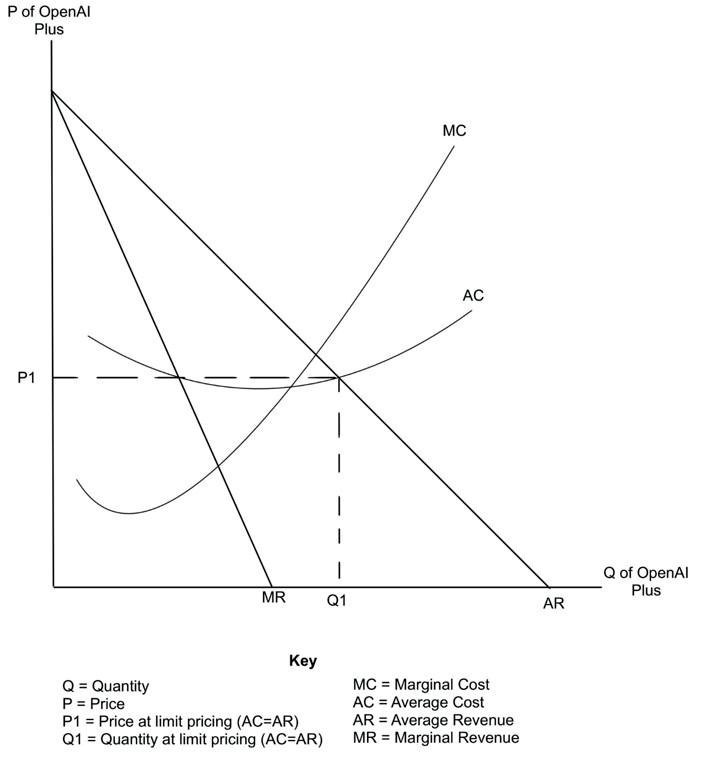
subscriptions are priced at P1, or where AC=AR, at exactly where costs are lowest without making a loss.
By leveraging economies of scale, OpenAI can sustain lower prices than any potential
Isaac Wetzel
Upper Sixth
startup lacking similar cost advantages. This prevents new firms from entering as they would have to operate at a loss for an extended period before gaining enough users to compete, and is also shown on Diagram 1 by the relatively flat AC curve; a smaller firm would have a steeper AC curve, as they are unable to benefit from economies of scale and lower long-run average total cost, as shown on Diagram 2. This lower LRATC is made from savings in, to mention a few, bulk-buying supplies, greater negotiating power to lower interest rates on business loans and the ability to diversify into a large range of products (for example, OpenAI’s image generator DALL-E). Consequently, OpenAI has maintained a dominant market share until the recent emergence of DeepSeek.
However, an important counterargument is that government intervention can help new firms overcome barriers to entry. The Chinese government heavily subsidised DeepSeek, an OpenAI competitor that launched in 2024. These subsidies allowed DeepSeek to absorb initial losses and match OpenAI’s limit pricing, making entry viable despite high costs. As a result, DeepSeek has captured a significant share of the U.S. generative AI market. This suggests that, while contestability remains low overall, government support can act as a counterforce against the market dominance of firms like OpenAI and Alphabet. However, such intervention is not universally available, meaning many AI startups still struggle to compete.
Beyond pricing strategies and acquisitions, high barriers to entry further reduce contestability in the AI industry. Developing a generative AI model such as ChatGPT, DeepSeek, or Claude requires access to scarce, highly skilled AI researchers and engineers. These specialists are in limited supply, making recruitment difficult and costly. Additionally, the physical infrastructure required to train and run AI models, including high-performance computing hardware, vast data storage, and enormous energy consumption creates significant sunk costs for any new entrant. While an AI firm could eventually recoup these costs, the upfront investment is often prohibitively high, deterring potential
competitors and reinforcing the dominance of incumbent firms.
However, some argue that the generative AI market is more contestable than it appears due to product homogeneity. Generative AI models from different firms such as OpenAI’s ChatGPT and DeepSeek offer largely similar features, making it easier for new entrants to replicate existing
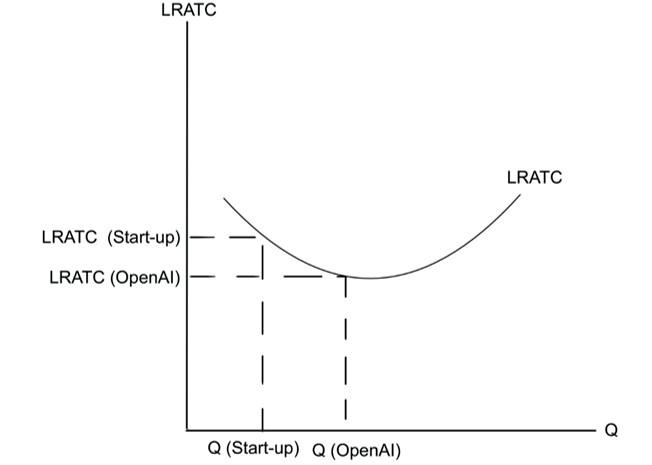
products. Unlike industries where firms rely on strong product differentiation, AI advancements often stem from open research at universities and independent institutions. Additionally, the lack of strict patent protections in AI development means that new firms can potentially reverse engineer existing models, reducing the first mover advantage of established players. This suggests that, if a new firm can overcome the initial financial and technical hurdles, it could compete effectively by offering a comparable product.
Overall, the generative AI market has low contestability due to significant barriers to entry, market concentration, and strategic pricing by dominant firms. While government intervention (such as subsidies for DeepSeek) has enabled some competition, this is not a universally available solution; not every start-up is backed by the government of the second-largest economy in the world. The requirement for highly skilled workers, vast computing power, and high sunk costs outweighs the potential ease of replicating existing AI models. As OpenAI and DeepSeek continue to expand their market dominance, the likelihood of new firms successfully entering the market without external support remains low. Thus, the generative AI market remains highly concentrated and difficult for new entrants to challenge effectively.
Do autonomous, nonhuman animals have rights that ought to be ‘recognized by law’?
Joel Ireland
Upper Sixth

“Whether autonomous, nonhuman animals have rights that ought to be ‘recognized by law’ is precisely the question [courts] are called upon to answer... The immensity of that question does not place it exclusively within the domain of the legislature”. Taken from the judgement of Judge Jenny Rivera, New York Court of Appeals, in Nonhuman Rights Project (Happy) v James Breheny, No 52, 14 June 2022.
As we begin constructing a legal system suitable for animals and humans, we find ourselves without an instruction manual for guidance. As animal rights attract attention in political and legislative discussions, we must establish how rights should be allocated. It is necessary to determine whether the courts or legislature is the appropriate place for law reform. I believe that both the legislature and the courts will play essential roles in law reform and effective outcomes will necessitate collaboration and mutual backing.
However, while a change via legislation and the courts is necessary, we also require a fundamental change in the public perception of animal rights.
In Happy (the elephant) v James Breheny (New York Court of Appeals 2022), the Appellate Division suggested that granting animals legal personhood would ‘lead to a labyrinth of questions that commonlaw processes are ill-equipped to answer’, and that the process of integrating other species into legal constructs would be a matter for the legislature. Essentially, the courts and the common law are well suited to answer a ‘labyrinth of questions’ if it were to arise. This is unlikely, since habeas corpus operates case-by-case and is determined with a pragmatic contextbased attitude, hence, a decision by the Supreme Court to transfer Happy to a sanctuary does not mean that other animals would similarly succeed on a petition for habeas. Therefore, the mechanisms of the
common law mean that questions will be confined to the animal before the court and will not spiral beyond the court’s domain. Certain members of the court argue that granting legal personhood liberty rights to Happy would lead to a ‘“sweeping pronouncement” of nonhuman animal personhood [displacing] statutory frameworks’. However, court decisions would not lead to a slippery slope, which I believe is the weakness of petitioning for law reform through the courts. The concern of the majority was that granting legal personhood and liberty rights to Happy ‘would not be an incremental step regarding the scope and flexibility of Habeas’. I challenge the majority's fear of a slippery slope because it implies that universal animal rights are morally unfavourable. Courts use various doctrines and the nature of habeas to firmly control the implications of their decisions. However, I believe we require a cascading domino effect of universal animal rights
Happy the Elephant
instead of waiting case-by-case to extend rights to each animal that comes before the courts. The legislature might be better suited to enacting extensive animal rights for several species simultaneously.
A question to consider is whether the writ of habeas corpus can even apply to animals through the common law. If not, then petitioning for law reform through the courts would be less successful, since liberty rights would be challenging to achieve. Steven Wise proposes that through the support of habeas corpus petitions, some animals can transition from the classification of legal thinghood to legal personhood. Wise defines a legal person as a being with the capacity to have legal rights. Under Wise’s theory, rights can therefore be attained through the courts (Fasel & Butler 2023). The court stated that Happy could not be treated as a person for purposes of habeas corpus but provided little justification as to why. There are numerous historical cases where habeas has been applied to chattel and individuals without legal existence. In Somerset v Stewart, it was ruled that habeas corpus was a constitutional right available to slaves despite their classification as chattel (English Heritage 2022). This is one example that demonstrates flexibility when applying habeas and displays a willingness to adapt and reform the common law to present times. Therefore, habeas corpus can apply to animals through the courts, and as legal personhood can be sought through habeas, seeking rights through the
courts is also therefore possible.
In the absence of animal rights legislation, one may be excused for hesitation towards discussing law reform through legislation. By investigating animal rights law proposals, we can assess the potential of law reform through legislation. An example is the Finnish Animal Rights Proposal, (Finnish Animal Rights Lawyers Association 2020), which demonstrates the power of legislation to safeguard ‘fundamental [thick] rights’. The proposal offers an inclusive approach, which demands that all animals are presumed sentient and are therefore deserving of fundamental rights unless proved otherwise. The all-encompassing scope of animal rights legislation offers more potential to reach universal rights than the case-by-case approach courts employ.
Under subsection 1 of Article 8 - the Right to Respect for Private and Family Life, ‘Everyone’ could be replaced with, ‘Every [mammal] has the right to respect for his private and family life’. Hence, law reform through legislation may be more successful given the already established framework of extensive rights for humans.
The courts will have a crucial role interpreting animal rights legislation.
The established framework of rights legislation and statutory instruments provides a suitable transferrable platform for the law reform of animal rights. Whilst animal and human rights need not be coterminous, already established frameworks can be used when integrating animal rights into human legal systems. For example, the European Convention on Human Rights (European Court of Human Rights n.d.) could be modified to protect the capabilities of an animal in question.
In conclusion, it may be more effective to campaign for animal rights through the legislature, given its broader, all-inclusive nature. However, the courts will have a crucial role interpreting animal rights legislation. For animal rights to be effective, courts must be diligent when applying the law with the ultimate goal of universal animal rights. The legislature cannot account for every possible circumstance, and so it is therefore the court's duty to maintain the goal of the legislature. It should not be the duty of just one institution; law reform should arise from both the courts and the legislature to achieve the best possible outcome for animal rights. However, without a change in public opinion, regardless of which institution recognises animals as having rights, we would see miscarriages of justice, which would not be the result of flaws in the legal system but rather human failings to uphold the rule of law.

‘We
should welcome another Trump presidency.’ Discuss
This unseen, timed essay was written in one hour
‘Make America Great Again’, better known as ‘MAGA’ is the Trump administration’s signature slogan and a mantra by which they live and govern the world’s leading superpower. Since the 2016 US election this phrase has appeared on flags, signs and most notably the red Republican caps which people wear with pride. Yet to have pride for Trump is to have pride for racism, homophobia and sexism. These attributes of Donald Trump couldn’t have been made any clearer by his enormous wave of new foreign and domestic policies which he has introduced in just his first month in office. It’s safe to say: we’re in for a ride.
Trump has always made clear that he strives to reduce immigration into the USA. In 2016, he made clear that he wanted to ‘build a wall’ along the southern border with Mexico. Additionally, he stated, rather embarrassingly, at the last presidential debate of 2024 that immigrants were ‘eating the dogs and… the cats.’ This xenophobia led to him declaring, on his first day in office, a national emergency at the Southern border. Another one of his immigration policies was to carry out mass deportations of Mexican immigrants which is still occurring on a large scale now. However, the Trump administration only seems to be concerned with people of colour immigrants and not white immigrants. This shows that Trump only wants to cleanse the country of POC immigration, the type which has helped to develop America to the global superpower that it is today. This further demonstrates Trump‘s racist attitudes towards people who don’t look like him.
As well as reducing immigration Trump has placed a 15% tariff on China, the world’s biggest exporter of consumer goods, and threatened 10% tariffs on both his neighbours, Canada and Mexico. Mexico is the United States’ biggest food exporter, so the lower egg prices that Trump promised might not happen after all. Many people may ask, ‘what is the need?’ To which the reply is: there is none. Placing tariffs on other countries has no other significance other than the fact it makes Trump feel more superior intellectually and politically; he is not. Moreover, adding to the petty policies of Trump, the Gulf of Mexico was imaginatively renamed the Gulf of America.
Leo Cropley
Fifth Year
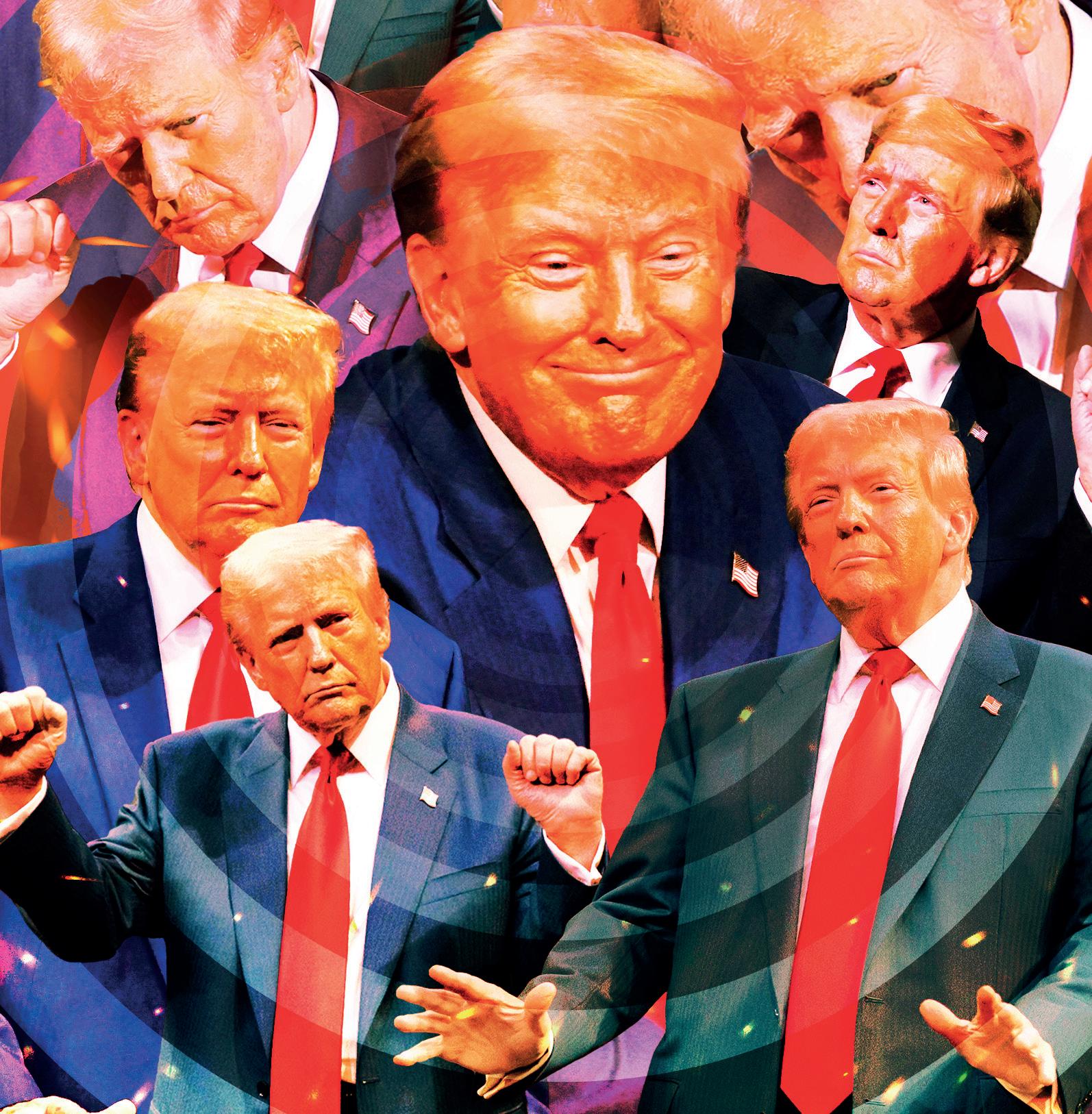
Why? It touches more US coastline, the president says. Trump has also showed an interest in owning the Panama Canal, a vital region connecting the Pacific and Atlantic oceans. Again, what is the need?
Trump‘s foreign policies may come as a shock to many people even though his campaign made his intentions clear, but some of his domestic policies are shocking even to the well-aware part of society. Trump‘s views on women’s rights and women in general can be looked at as nothing short of vile and inhumane. During his previous term in office, the Roe vs. Wade law allowing for abortion was overturned, giving individual states the power to decide their own abortion laws. Now, Trump has threatened to ban abortion on a federal scale, a policy comparable to how women were viewed and treated in the early 1900s. Trump has got something fatally wrong however. Banning abortions doesn’t stop abortions… It stops safe abortions. As a result, maternal mortality rates are expected to rise even further than how they did when Roe vs. Wade was overturned.
Now it is safe to say that things aren’t looking too great, but there is one overarching question: why did Trump win the popular vote over Kamala Harris? This all stems back to the start of his campaign; Trump has created a cult of personality, using the Bible as a guideline and a way to get people on his side. So much for separation of the church and state. Trump‘s anti-LGBTQ, racist views have a resonated with the huge Catholic and Protestant population in the USA. His cult of personality is parallel to how dictators like Hitler and Mao Zedong got people on their side through propaganda, mass appeal and brainwashing.
Overall to welcome a second Trump presidency would be to welcome back 1900s fascism and to exacerbate the fall of democracy in the USA, and as a result the rest of the world. America has a huge influence globally; if we support a dictator, we will experience the impacts of his regime that could potentially be catastrophic.

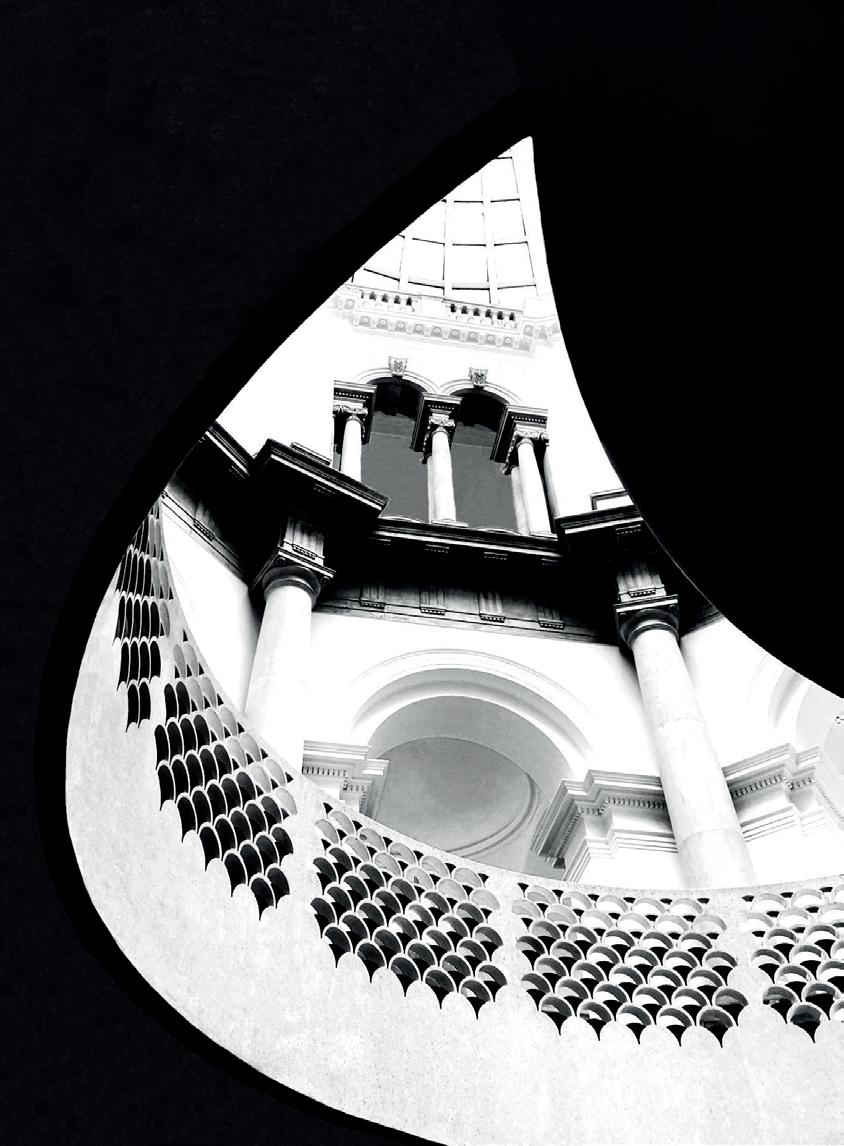



Josie Scott Plummer (A Level)
Eleanor Gore Brown (GCSE)
Lucas Macaulay (GCSE)
Noah Hadley - Folding Table (GCSE)
Sophia Lane - Accessible Bedside Table (A Level)





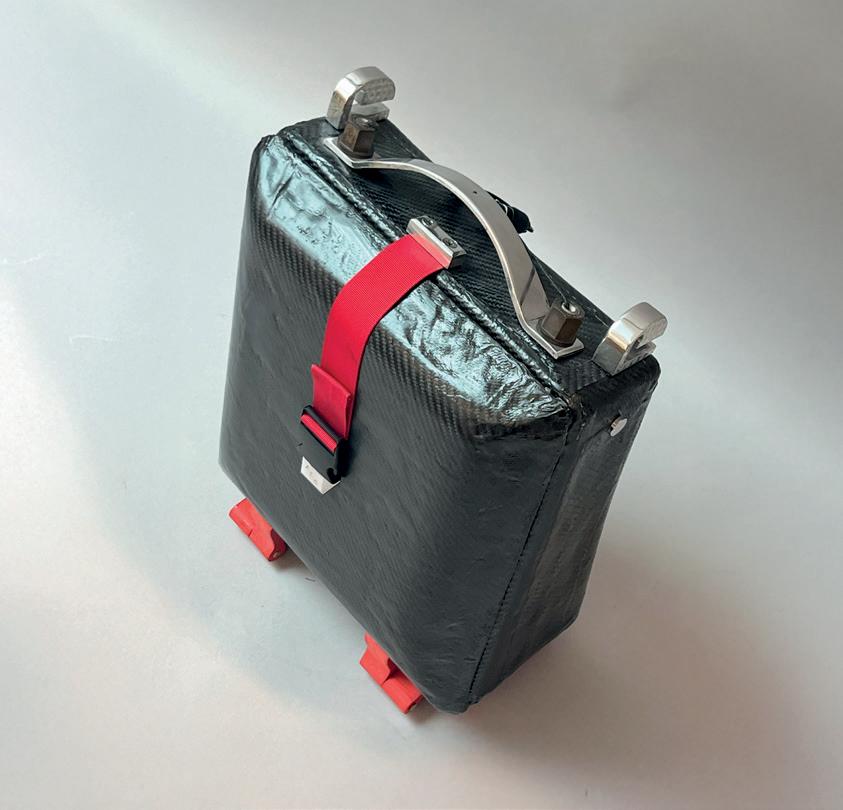
Leo Cropley - Picnic Bag (GCSE)
Alex McBride - Exercise Bench (A Level)
Elise Millington - Music Storage Unit (A Level)
Luke Cutcher - Dog Washing Station (A Level)
Alessandro Schmitt - Boat Tool Box (A Level)
Lucy Oliver (A Level)
What is the optimal global population?
There’s a popular misconception that the global population is growing exponentially, however, even though the global population is still increasing in absolute numbers, population growth peaked decades ago. Since the 1960’s, growth rates have more than halved, falling from over 2% to less than 1% per year. The UN expects rates to continue to fall, and towards the end of the century it predicts negative growth. Despite this, the global population currently stands at 8.1 billion; a number the Earth cannot effectively sustain in the long run. Population has held a central position in the study of economic growth and can be traced back to at least Adam Smith’s assertion that a nation’s wealth should be measured in terms of per capita income rather than aggregate income. In this essay I will discuss whether overpopulation is hindering our economic growth.
Firstly, the current size of our population means that demand for necessary resources such as food, water, clothes, and shelter is so large that we have had to develop techniques to produce these items faster than ever before, in order for supply to keep up with demand. This not only uses up many of Earth’s natural resources at a rate that is not sustainable, but also requires huge amounts of energy. Despite an attempt to move towards renewable energy resources, 83% of the energy we use still comes from fossil fuels. Burning these fuels produces greenhouse gases, such as carbon dioxide, therefore contributing to global warming and the climate crisis. This can lead to unpredictable weather, affecting crops and food production, therefore causing food shortages in local
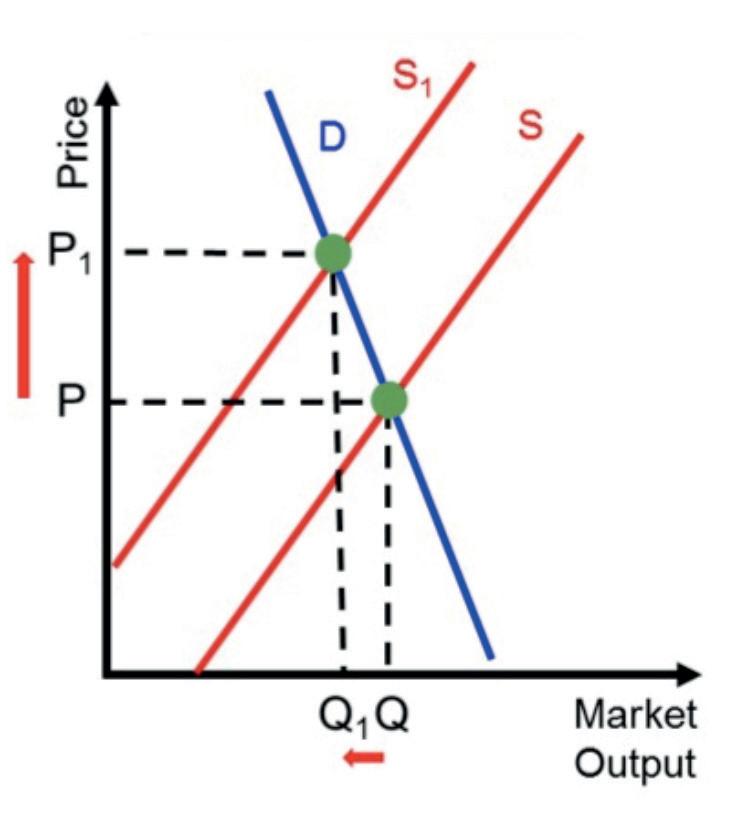
Milly Virtue
Upper Sixth
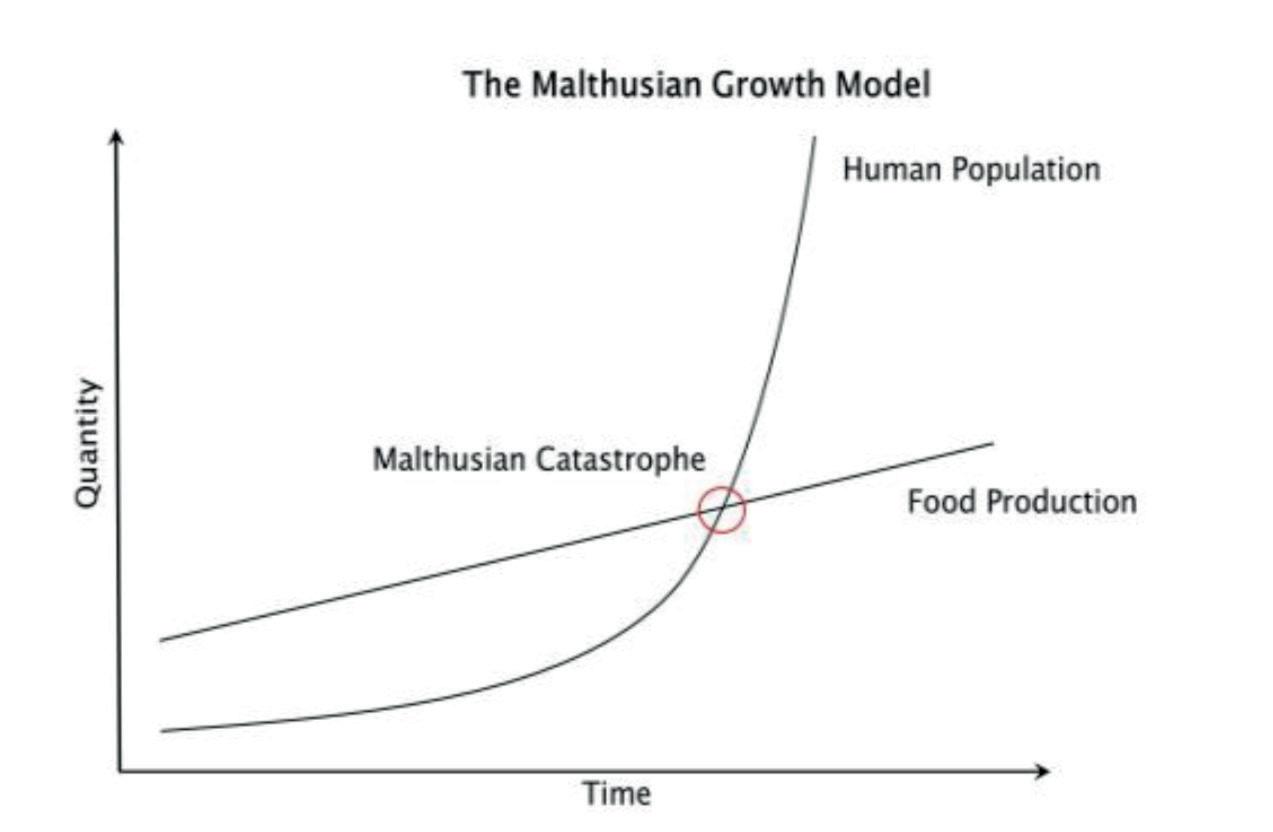
areas, especially in developing countries, so the price of food may increase due to the decreased supply (S to S1). Price may increase significantly (P to P1) due to the inelastic nature of supply and demand for food.
This will impact low-income households more than those with higher incomes, increasing inequality and poverty. Countries that rely on importing lots of food will experience a rise in the price of these imports during a food shortage, worsening their balance of payments. Also, the government may need to increase its welfare expenditure as a result. Furthermore, some areas are struggling with both climate change and population growth, for example, the Sahel region of Africa, where cases of hunger and malnutrition are on the rise again. An estimated 768 million people were affected by hunger in 2021, an increase of 150 million since 2019.
Thomas Robert Malthus believed that the population could be controlled in order to balance the food supply through positive and preventative checks. He stated in his piece, ‘An Essay on the Principle of Population’, that populations grow in geometric progression (a sequence where each term is found by multiplying the previous one with a common ratio). Whereas food production increases with arithmetic progression (a sequence where there is a constant difference between consecutive terms). Malthus therefore concluded that population
would grow more quickly than food production, resulting in a food shortage. Malthus believed this imbalance between population growth and food supply would be corrected by natural forces, such as earthquakes and floods, as well as human actions, for example, wars and famines. These are examples of the positive checks as previously stated. In addition, Malthus suggested the use of preventative measures to control population growth. These included celibacy, late marriage, and family planning. Therefore, Malthus theorized that if the population exceeds the amount that can be sustained by the food supply, famine and disease will become rampant (a ‘Malthusian Catastrophe’) and so the population is forcibly decreased to its earlier levels. This is known as the Malthusian Population Trap.
There are, however, many criticisms of this theory and Malthus’s predictions haven’t played out in the real world. In many cases, the food production rate has increased more rapidly than the population growth rate. For instance, in the United States, in the 1930s, a quarter of the population worked in the agricultural sector, and the total GDP was less than $100 billion. Today, less than 2% of the population works in the agricultural sector, and the total GDP is more than $14 trillion. Furthermore, Malthus’s theory on food production restrictions was based on the limited availability of land. However, due to globalisation, we can now trade goods and services for food. This results in a rise in the amount of food that a country can consume. Therefore, no consensus has
emerged on whether population growth is beneficial, neutral, or detrimental to economic growth. Similarly, there is no unanimous agreement on the effects of economic growth on population dynamics.
Another negative effect of population growth on economic development may include overpopulation leading to resource depletion and losses of biodiversity. Habitats are being destroyed mainly due to deforestation, urbanisation, agriculture, and resource extraction. Current extinction rates may be as high as 140,000 species lost every year due to humans overfishing and taking over large areas of land (such as tropical rainforests) to use for farming food and fuel crops. The WWF’s latest Living Planet Report shows that vertebrate wildlife populations declined by an average of 69% between 1970 and 2018. During that time, the human population doubled. Biodiversity loss and ensuing ecosystem collapse are tragic in their own right, but they also pose a huge threat to food and water security, public health, and resilience to climate change impacts. Without a wide range of animals, plants, and microorganisms, we cannot have the healthy ecosystems that we rely on to provide us with the air we breathe and the food we eat.
Population growth therefore poses a huge threat to our environment and the IPAT equation proves this (I = P x A x T), where Environmental Impact = Population x Affluence (consumption per person) x Technology (impact per unit of consumption). This implies that if population increases, so does the impact we have on the environment – or (linking back to the Malthusian Trap) affluence must fall, causing poverty and hunger. This equation was developed by biologist Paul Ehrlich and environmental scientist John Holdren in 1971 and is similar to the idea of carrying capacity (the maximum population size of a biological species that can be sustained by that specific environment). We can infer that the current size of our population is too large to be sustained by our environment because of the detrimental effects to our climate, such as waste and water pollution. These effects in turn affect humanity as our environment provides resources vital for our survival.
Conversely, some economists believe that an increase in population will lead to an increase in economic growth. The endogenous growth theory is the concept that economic growth is caused by factors that are internal to the economy rather than external ones. The theory

is built on the idea that improvements in innovation, knowledge, and human capital lead to increased productivity, positively affecting the economic outlook. The endogenous growth theory was first created due to dissatisfaction with the idea that exogenous factors determined long-term economic growth. In particular, the theory was established to refute the neoclassical exogenous growth models, as it made predictions about economic growth without factoring in technological change. The theory challenges those ideas by placing importance on the role of technological advancements. Since longterm economic growth is derived from the growth rate of economic output per person, it would depend on productivity levels. Productivity depends on the progress of technological change, which relies on innovation and human capital; these factors are considered internal to an economy, not external. The Romer model states that technological advancements lead to economic improvements. Additionally, the model also assumes that innovative ideas are a very important part of economic growth. These ideas are more likely to arise if there is a larger population as there is a greater amount of skilled human capital.
However, the endogenous growth theory faces many criticisms. Firstly, the theory assumes that all firms in an economy operate under perfect competition, which means that they have little or no market power. In reality, many industries are dominated by a few large firms that have
significant market power, this can result in inefficiencies and reduce the rate of economic growth. Secondly, it fails to account for the fact that as countries grow and develop, they often face environmental challenges, such as pollution, climate change, and resource depletion. Failure to address these challenges can result in a decline in economic growth in the long run. Also, countries that face political instability often have a harder time attracting foreign investment, which can slow down economic growth. In addition, political instability can lead to a lack of trust in institutions, which can further harm economic growth.
Overall, the optimal global population depends on how you define ‘optimal’. If the environment is the priority, then it is clear that our current population is far too high and one of between three to four billion would be far more sustainable. We experienced a population of three billion in 1960 and four billion in 1974, prior to the start of the climate crisis. From the perspective of economic growth, it is more difficult to give a figure. Romer suggests that population would need to be higher than 4 billion for increased innovation and technological progress – resulting in economic growth. However, if population is too large this growth may be unsustainable, due to the drawbacks I previously mentioned. It is my belief that a population of five to six billion is a good compromise, but it is vital to ensure that it does not grow beyond that.
English Poems ‘Trapped’
Lower Sixth A level English students have been studying the poetry of Sylvia Plath. Plath pioneered the genre of what became known as ‘Confessional Poetry’, a verse form that expresses, without filters or euphemism, a profound angst about human experience, and particularly that of women. As a tribute to Plath’s genius, the students have attempted to replicate her style and content in their own verse.
‘Scars And Silence’
Beneath this endless grey sky, The weight of earth presses into me, Its cold, unyielding touch on my bare skin. It holds me like a mother might, But I am no child.
I am something broken. Something lost.
I am the wound.
I am the one who gives and takes. I am the one who bleeds and heals.
I am the one who is caught in the silence.
Yet, my body tells a story I cannot ignore. These scars, Do you see them?
Each one carved by man himself, Lines etched deep, History forever in me.
And my womb.
My God, my womb.
Once it was a sanctuary, Now turned tomb.
A cradle made coffin.
I didn’t think a body could betray itself like this.
Yet here I am, Standing among my ruins.
A woman.
A mother.
A corpse.
Waiting, always waiting, For the earth to reclaim what it lent me.
Isla Paton
Lower Sixth

Trapped, I succumb to the surge. The storm assumes control, Consuming my brain and body
Leaving me bare.
You watch from afar
As I lie, Those who condemned me, stare.
The pulse grows ever stronger, Grabbing hold with its rigid grip, Relentless. It strips me of thought And invades my mind.
I see you who left me, I long to reach you, to see you, to be with you. Like a vapour you fade, Distant once more.
My head pounding, my body a flame, A final blinding white flash, and silence.
I feel as a ghost, Lost, but they tell me I am free. Emptied of all self, a lifeless soul.
‘Abyss’
Our souls entwine Strangled, strangled The burning flame dies Alone once more
The smoke thickens Enveloped in darkness Tap. Tap. Starkness
Halls once busy
Not a sound
Just the whistling wind through a splintered pane
Ongoing enemy ceases to hide but shouts, ‘it’s fake!’ that face, those eyes
People declare on their knees
Heard, but never seen
Creak, the rope
Swaying, stirring
All is lost, scars are turning
Continuous no man’s land is hanging Hung.
Freya Austin Lower Sixth
Eleanor Burton
Lower Sixth
‘Half of Me’
The salty bitterness evades my space, the shallow depths of the gap, the gap that cannot be filled.
I peer into the shiny surface and what I see Only remembering half of me. Each crash swallows me more, scenes of flashing smiles, yet snares.
I am left empty until the final breath. My body so bare.
The weight of him.
Laila Keita
Lower Sixth

‘The Skies Are Dark’
The skies are dark. The sun shall never return
Like a father who loves you no more, it shall never return
The darkness plagues my heart I feel no more
Numb.
The candles stand tall, with no flame to shrink them Darkness is all encompassing
Daylight dwindling as evening draws near Day is one eternal night
The stars twinkle through the black Laughing at my sorrow
The river has frozen Winter chill like icy claws
The baby's cries pierce through the veil
A child that is not mine I crave silence
Quiet Peace
The hands of death draw near I shall succumb
Alice Fimpel
Lower Sixth
‘The Dollhouse’
You keep me in the dollhouse, Dressed up, perfect.
Walk to the mirror, edges cracked Some strange girl stares back
Her face draped in silence
There’s no room to move I make what he wants, and hope he approves
The men play soldiers I hear their shouts In a German tongue, I holler back
The doors slam shut
The hinges close
And I stay quiet
Frozen in this mould
It’s his house, not mine
I’m just a girl
And I'll stay here forever, Stuck in his world
The world is glittering I shine so bright
Yet these doll doors keep me in tight.
Tilly Forbes
Lower Sixth
The spectator effect and attitudes towards athletes
The spectator effect occurs during sports matches or events and is the impact that the crowd has on an athlete’s performance. There is great debate on whether this effect has positive or negative impacts on both athlete’s success and their mental health. There are links between the spectator effect and increased motivation. For example, Lebron James has credited the audience’s presence and support in helping him make game-winning shots. The other side of the coin, however, is that the presence of the crowd can lead to intense performance anxiety and stress for the players.
Ned Naym
Upper Sixth
that the pressure from large crowds were influencing how referees made decisions.
Audiences can be very damaging to players.
Many examples of the two sides of the spectator effect lie within the sport of tennis. Novak Djokovic for example seems to thrive in front of a large crowd, but can become visibly nervous when his family is present. Another example, is the controversial Nick Kyrgios, who is frequently impacted by the crowds during his matches, often becoming enraged and even shouting at the crowd. Interestingly, Kyrgios seems to perform better when he is frustrated, demonstrating the unique impact that the spectator effect can have on athletes and how it is tailored to each individual.
There have been a few occasions where outbreaks of illness have led to sports fixtures being played without crowds present, and psychologists have been able to observe the change in performance that results from the lack of a crowd. Most notably is the outbreak of the Coronavirus, causing football fixtures across the world to be played “behind closed doors”. In the Italian football league “Serie A”, a study into the effect of this was carried out, and provided some very interesting results. The number of points collected by teams playing at their home ground dropped by 8% in the years 2019-2021 (when the football was played without the presence of a crowd) than the previous 6 football seasons, suggesting that crowds who are vocal and supportive of a team give them the motivation and psychological strength to perform well. Interestingly, the number of penalties that referees gave against home teams increased by 30%, actually suggesting
Another example of the positive effect a crowd can have upon a team’s performance is the regularly referred to, “home ground/ team advantage”, which is the idea that the team playing at their stadium in front of their supporters are expected to do better, as the support that they experience provides them with a greater motivation and drive to succeed. There are, however, instances of teams actually performing worse at home, often when they have gone on a long losing run. Queens Park Rangers, for example, an English football team went on a very poor run of form, only winning 8 of their previous 28 games. Of those 8 wins, only 1 of them was at their home ground, suggesting that the players performed better without the mental pressure of playing in front of an expectant home crowd.
So, what does this mean? Is the psychological impact of the spectator effect purely based on the current success of the team? Personally, I think that the true extent of the effect is based upon the pressure that a crowd puts upon the
players themselves. A Chelsea footballer, Trevoh Chalobah, spoke recently about his experience with anxiety during his first few months playing for the team, stating that, “We (footballers) are normal human beings”, and that the pressure on the shoulders of young players is almost unbearable. Similarly, Joe Bryan opened up about his experience with anxiety whilst playing football, and how it actually transferred into his everyday life, causing him to feel distanced from the people around him. These two cases display that audiences can be very damaging to players, and lead to them cracking under the unbearable pressure that they are subject to.
So, although crowds are highly credited by coaches and players for their positive and uplifting impact on a player’s motivation, causing them to have greater belief in themselves and lead to improvements in their performance, the intense and sometimes negative atmospheres can create a great pressure and lead to mental health struggles, such as anxiety. The spectator effect has such a powerful impact on the outcome of sporting events, so it is therefore vital that athletes are taught how to combat and deal with the effects of playing in front of such large crowds.

What kinds of businesses have benefited the most from Taylor Swift’s Eras Tour, and how?
The Eras Tour, performed by prevalent and renowned artist Taylor Swift has curated an overwhelming amount of impact on todays economy and businesses. Swift carries her tour over 5 continents while performing 149 shows, and due to the sheer mass of fanbase that she holds, The Era’s Tour has been praised as the first tour to generate over $1 billion in revenue, rewarding it as the highest grossing tour in the history of the music industry. It's the tour claiming the trophy of being the most coveted ticket, however, not only does it give Swift the ability to engulf the public with her musical talents, it also gives businesses the sacred key to a gratifying sum of revenue throughout. This essay will state that the businesses, furthermore, industries that have benefitted most significatly and directly from The Eras Tour are the countries’ gross domestic product as an entirety, hospitality, retail industries, and transportation. It will also include businesses that have indirectly been positively impacted by the overwhelming
Lower Sixth Sooz Marsh
and sheer weight of success that stands with Taylor Swift and the accompaniment of her tour.
The first tour to generate over $1 billion in revenue.
To illustrate the immense perimeter of this tour, consider these views: If Taylor Swift was an economy, her revenue would surpass that over 50 countries. If Taylor Swift was a firm, her customer satisfaction score would situate her high enough to be the 4th most sough after brand. And to conclude, her customer loyalty stands in parallel link to the royal crown, emphasizing the profound dedication of her fanbase (Julius Baer 2024). These formidable, yet slightly concentrated comparisons offer an assiduous gauge on Swift’s unrecognizable economic impact and how that has permeated the sectors of the aformentioned businesses. An economic boom, measured by the economy’s gross domestic product (GDP), is a stage of an economic cycle, which also includes the peak, bust, and trough. It stands as the approach to the limitation of sustainable growth and leaves little room
for expansion, alternatively known as the peak. An economic boom aptly describes the momentous circumstance that occurred in the cities across the five continents, driven by the substantial economic impact of Taylor Swift, the primary catalyst of this efflux.
Singapore serves as a prime example of a country whose industries have been revitalized by the economic ‘medicine’ that is The Eras Tour. Following the declaration that the music mogul will be performing six concerts, holding over 50,000 attendees each, Bloomberg reported Singapore’s GDP for quarter one of the financial year of 2024 to be growing by 2.9%. Additionally, the annual economic growth of the remains of 2024 will increase by 2.5% as opposed to the earlier predictions of 2.3% (Siladitya Ray, Forbes). To propose a clearer perspective, The Eras Tour accounted for a 0.2% increase in economic growth for Singapore, thus translating to an augmentation of approximately SGD 1.2 billion to it's economy. The ways in which Swift affected Singapore’s GDP ranged from small, boutique shops to worldwide, multinational

companies. The attire commonly adopted by Swifties for The Eras Tour reflects the distinct phases of Taylor Swift's career, often characterized by sequins, tassels, and sparkles. This phenomenon has had a significant impact on small businesses specializing in such apparel, which experienced substantial financial benefits due to the tour. In the UK, for instance, nearly 20% of concertgoers purchased new outfits specifically for the event, spending an average of £56 each. This surge in demand led to unprecedented sales figures for these businesses, directly resulting from the tradition that Swifties have cultivated around concert fashion. One eminent example is Aupen, a Singapore-based, niche but accessible luxury brand. After a photo of Taylor Swift with Aupen's Nirvana bag went viral, the brand's website experienced a peak in demand, leading to increased exposure and sales.
This section will transfer from Singapore’s GDP growth to the businesses that fall victim of a direct and benefitial impact as a result of The Eras Tour. So where has this affect stimulated from? QuestionPro, a survey building software company, curated a form translating that the attendees of the worldwide concert spent an approximate $1,300 (£1,027) per show. To break down this astronomical price tag, this includes the expenses of the ticket itself, transport to the destination, outfits and merchandise on offer as well as food and beverages too. This also equates to almost 100% more than

the amount ‘Swifties’ had initially budgeted and been prepared to pay. The following bar chart (Julius Baer) shows the percentage increase on industries in conclusion of the tour:
As clearly stated, stadiums inevitabley experienced the greatest level of increase of 75% due to their seasonal increase in demand, however, the 27% increase in the hotelier industry played a huge role in the U.S. The Smith Travel Research (STR) recites data intelligence and global benchmarking on the statistics for hotelier industries and has analyzed hotel activities and performance for the nights of the first 28 shows held in 10 different cities. It recalled that The Eras Tour allowed an increase in $98.2 million (£77.6 million) in U.S hotel room revenue; revenue being the
total inflow of money a business recieves. This equates to the aggregate hotel room revenue generated in one day by the five largesr hotel markets in the U.S combined (referenced from 2023 data). A prime example of a hotelier chain that maximised it's profits as a result of the tour’s final leg in Miami on October 18th 2024. According to the vice president and general manager of JW Marriot Turnberry Resort & Spa, Shane Allor, room revenue increased by nearly $1 million in 2 days. Occupancy increased by 30% from the recorded 600 additonal room nights over 3 days. While demand-pull inflation, a type of inflation that occurs when aggregate demand is greater than the economy or industry is willing and able to supply for, has occurred. JW Marriot’s pricing strategy is beyond the response of high demand; it's also
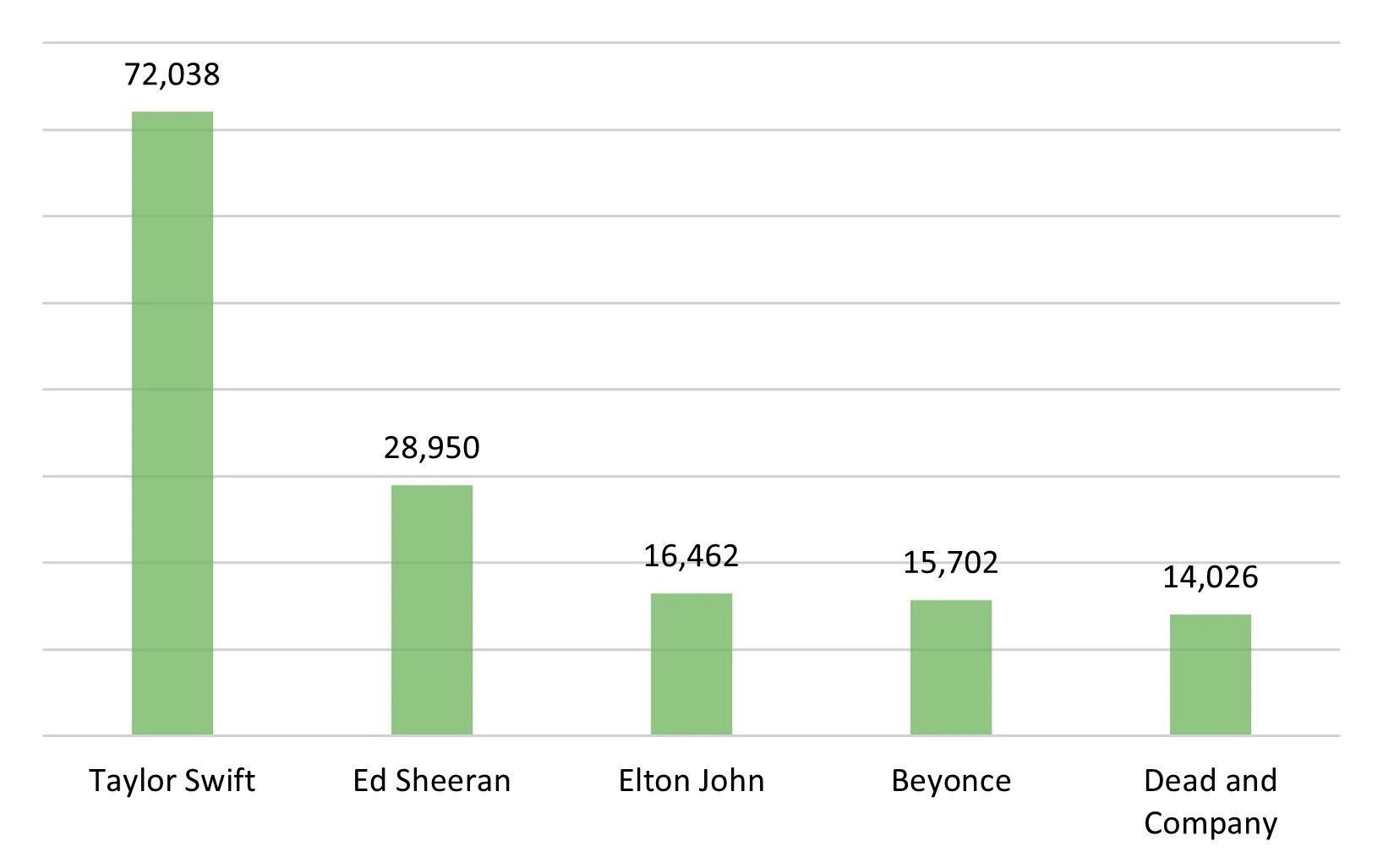
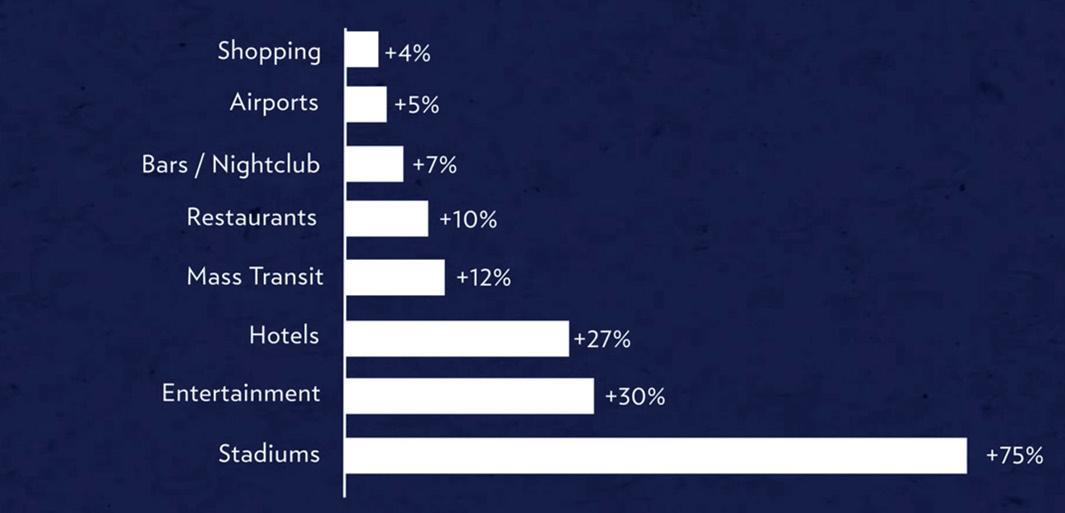
the intentional effort to optimize revenue by manipulating the event’s exclusivity, customer willingness to pay and the JW Marriot’s luxury brand status.
Overall, these figures underscore the unprecedented scale of demand driven by the tour, and highlights the dependancy needed from the hotelier industry. The hotel industry, experiencing a rise in bookings driven by The Eras Tour, is inherently linked to the wider travel industry. Concertgoers traveling from various locations to attend events similar to The Eras Tour not only increase demand for hotel accomadations, but also hold a domino effect onto other sectors such as the airline, car rental and taxi industry too. This interconnected effect reinforces the economic impact across multiple sectors, demonstrating how a single event can catalyze growth throughout the hospitality and travel industries.
As we can see from this graph, in comparison to Coldplay, Taylor Swift left a huge remark on the occupancy on the books, (OTB) which is a measure that hoteliers use when looking into the future to see how many rooms are booked at certain rates for a given day.With her peak almost reaching 30%, Swift has almost doubled Coldplay’s most popular night. This truly outlines the scale on which The Eras Tour sits at and how it is almost incomparable to any other remainining superstar. As a result, it represents the confirmed occupancy and predicted revenue the hotels’ will recieve. Almost acting like a cash flow forecast.
However, it isn’t solely the hotel industry that received a sheer weight of revenue influx. Transportation such as airlines
and taxis also experienced excessive financial gains as a direct result of The Era’s Tour. Devoted ‘Swifties’ displayed loyal dedication by travelling the extra mile to see their role model, whether it's passing through states or evening crossing borders. The unwavering commitment these fans show has created a cascading effect onto airlines such as United Airlines who reported a 25% rise in flight bookings to the many cities hosting the concerts. Airlines like Air New Zealand required extra measures to accommodate for the heightened demand and therefore added additional flights as well as increased seat capacity.
Moreover, taxi companies and ridesharing platforms experienced a comparable rise in demand driven by the influx of concertgoers attending Taylor Swift's Eras Tour. For instance, cities such as Amsterdam, Stockholm, and Milan reported an average increase of 8.2% in Lyft rides, reinforcing the heightened need for local transportation. Additionally,
in New Orleans, super-fans experienced transportation costs soaring to as high as $300 for rides that would typically cost approximately $50 due to dynamic pricing models (demand pull inflation) triggered by the overwhelming demand. This underscores the significant impact the tour had on local transportation services, particularly in major areas hosting the events.
From elavating national GDP figures in countries like Singapore, where the tour contributed an estimated 0.2% to the economy, to revitalising small, niche businesses through consumer spending, the tour’s impact is both vast and positive. It has generated substantial revenue across a wide range of sectors, including hospitality and retail to transportation. The Era’s Tour has not only created a temporary tourist attraction for cities around the world but has also acted as a lucrative revenue generator the entreprenuerial businesses in these cities too.

Swift effect by sector
Swift and her fan base
Similarities between the French and Russian Revolutions
Helen Jolliffe
Staff

Over one hundred years separate the French Revolution of 1789 and the Russian Revolution of 1917. They share striking similarities that ended both the Bourbon and the Romanov dynasties. Both had antiquated regimes that were trying to stem the tide of ideological change, both were led by uncharismatic men who held archaic ideas of Divine Right, both were married to women who were outsiders and cruelly vilified as traitors and sexual deviants, and both regimes were ultimately brought down by war.
Ideological change
Ideology in history has always been a powerful tool for fomenting Revolutions. France and Russia were hotbeds of ideological radicalism. France in the mid-18th century was the epicentre of Enlightenment thinking. Philosophers, such as Rousseau and Montesquieu, challenged the status quo of the Ancient Regime. Ideas that empowered the people to rise up against inept rulers, such as the ‘Social Contract’ and the ‘General Will’, or ideas that proposed taking sovereignty away from Louis XVI (as was seen in the freshly minted American Republic), became the norm. There was an air of excitement
amongst the elites who wanted to forge a new path inspired by Enlightenment thought. As the Comte de Segur said, “We were smiling mockers of the ancient ways… Voltaire seduced our minds, Rousseau touched our hearts…”. Likewise, the concept of democracy was stirring in Russia. Already Nicholas II had conceded to the ‘October Manifesto’ of 1906, which placed emphasis on a move away from autocracy through setting up a Duma in the spirit of constitutional monarchy. Although he defied this a year later, the seed had been sown to bring about the fully fledged democracy of the Provisional Government, in March 1917.
In both these revolutions, these democratic attempts were too gradual to withstand the radicalisation of ideology. The National Assembly in France and the Provisional Government in Russia had ideals of liberty, freedom of the press and speech, an end to torture, equality before the law, etc, but in both cases, these ideals were eventually trampled underfoot. The only chance that Russia ever had of being a truly democratic nation was destroyed by Bolshevik ideology. In January 1918, the Russian Constituent Assembly tragically met for the first and last time with Trotsky declaring,
“You are pitiful, isolated individuals! Go where you belong from now on – into the dustbin of history!”. Likewise, in France everything incessantly lurched to the left. Each Assembly became progressively more radical, until the period known as ‘The Terror’ ushered in a new ideology of ‘virtue through terror’, leading to mass executions between 1793 and 1794. In both cases, these radicalisations away from centre ground brought about horrendous civil war. In Russia, the Leninist civil war unleashed more deaths than the First World war, and in France the war in the Vendee was an horrific example of human sadism and depravity.
These high-minded ideals that had such promise were annihilated by subsequent ideologies that exploited the optimism of democracy and replaced them with immense suffering and corruption. Both Louis XVI and Nicholas II were to some extent the victims of their epochs; the ideologies of the Enlightenment and of democracy were overwhelming, and both were then murdered by even more radical forces, led by the Parisian sans culottes and the Bolsheviks respectively.
Louis XVI and Nicholas II
A further similarity can be seen when focusing on the leaders at the helm of each country. Both Louis XVI and Nicholas II were born into a superannuated system of absolutism, whereby both were certain that God looked down upon them, either in a Catholic or Orthodox setting, and validated their rules from on high. Both men tried
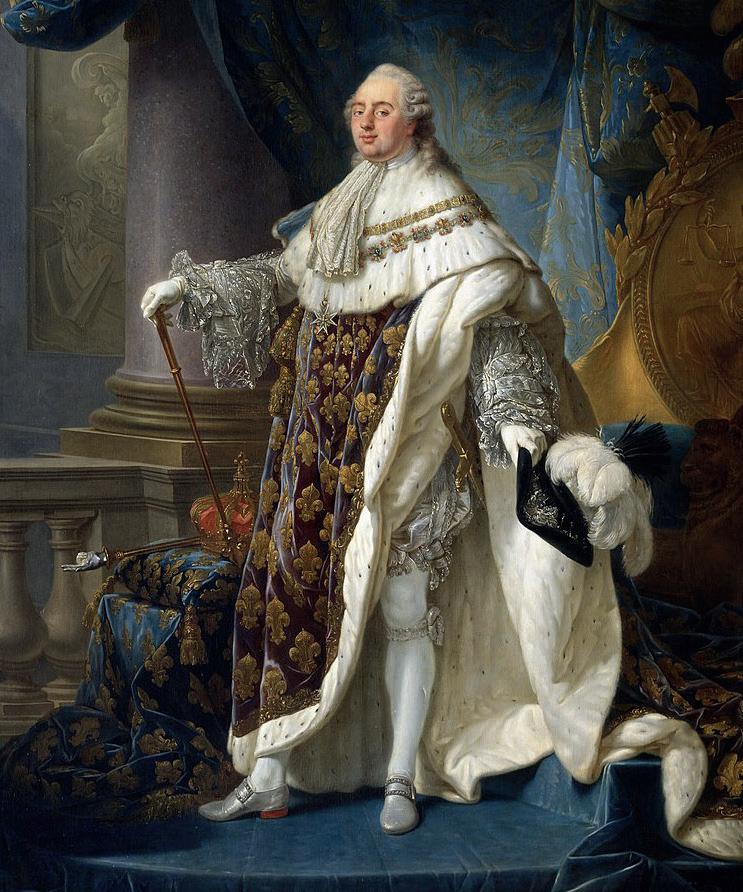
Alexandra Romanov
Louis XVI

their utmost to follow in the footsteps of greater rulers, such as the ‘Sun King’, Louis XIV, and Tsar Alexander III, but they were shadows of these men. They were both low on the charisma needed to keep the country in check. Louis XVI was described unflatteringly by his brother-in-law, Joseph II: “This man is a little feeble… he suffers from an apathy of both body and will”, whilst Nicholas II was derogatorily referred to as, “A country gentleman best suited to growing turnips”, by Kaiser Wilhelm II. These men found it very hard to battle with the demands of absolutism. Louis XVI failed to lead at crucial moments, such as when the Estates of the Realm met in May 1789 to discuss solutions to bankruptcy, nor did he lead once he was a constitutional monarch, and found the only way out was to escape into the arms of his enemies in 1791. Nicholas II did try and lead by taking direct command of the Russian army in 1915, but this proved a disastrous decision. Both rulers also reneged on their promises, which unleashed greater demands for their demise. Louis changed his mind about the voting system once the Estates General had convened, which meant the bourgeoisie felt betrayed. Likewise, Nicholas, having promised a constitutional monarchy, turned on the liberals to reassert his powers as an absolutist in his ‘Fundamental Laws’ of 1906.
Marie Antoinette and Alexandra Romanov
Queen Marie Antoinette of France and Tsarina Alexandra Romanov were both strangers in their lands, and this had highly negative repercussions for them. Marie Antoinette was born into the Habsburg royal family; the Austrians were historically the traditional enemies of France. She was known as ‘L’Autrichienne’ (the Austrian bitch) and once war had begun between Austria and France in April 1792, she was seen as a traitor. The main accusation in her trial in 1793, after which she was beheaded, was that she had leaked battle plans to the enemy. The Tsarina, likewise was not Russian, but German. Therefore, once war was declared in 1914, Russia found itself allied to Britain and France, and fighting Germany. The Tsarina was left in charge of the government when Nicholas went to the front in 1915, and she was accused of subsequent defeats. Another area of similarity is that both were appallingly vilified in the press. Gross, sexually explicit cartoons were published with no censorship whatsoever. Marie Antoinette was drawn as an insatiable lesbian and a court whore, surrounded with phallic imagery, and the Tsarina was shown to be in bed with the immoral Rasputin. Almost certainly, neither woman had this sexual appetite, but the ramifications of these pamphlets demeaned them, whipping up intense hatred. At her trial, Marie Antoinette was accused of sleeping with her son, which was entirely fabricated, but it was a way to represent her as a sexual monster.
“A country gentleman best suited to growing turnips”
Both these women were scapegoated and their public images destroyed. They were demonised as sexual perverts and seen as treacherous ‘Messalinas’, who were used to bind their enemies together.
War
Both men had vaunted views of their God given rights to govern, which in turn made them assume positions that needed charisma that they patently lacked. They fundamentally misunderstood that promising change and then not delivering it, was not only supremely arrogant in the eyes of the liberals, but ultimately catastrophic.
War laid the groundwork for the end of both regimes, as in each scenario, fear instilled radicalisation. Had war not broken out in the spring of 1792, it is doubtful that the French Revolution would have further radicalised. Louis was tamed after his attempt to flee to the border, and he agreed to accept the inevitable – that he must concede to being restrained by the Legislative Assembly. But as soon as war was declared, France was fighting Austria,
which was the land he had tried to escape to and he was quickly seen as suspicious. Moreover, to protect Paris from invasion, the urban poor were armed in ‘La Patrie en danger’. Once weapons were in the hands of the mob, it became inevitable that by the summer of 1792 the royal family were surrounded at the Tuileries palace and taken prisoner. Likewise, in Russia, the catastrophic defeats on the Eastern Front from 1915 were attributed to Nicholas as commander of the forces and led to domestic unrest. On his return to St Petersburg in 1917, he agreed to abdicate and relinquish his hold over Russia. Later, the urban ‘proletariat’ Bolshevik supporters were also armed, this time by the Provisional Government, to defend the city from a coup. Their militarisation catalysed Lenin’s rise to power and heralded the subsequent Communist takeover. Just as the French royal family were captured, so too were the Russian royal family who were then killed at the hands of the Bolsheviks.
War, in both cases, instilled fear and loathing against the two monarchies, neither of whom were trusted due to their connections with the enemy. It also armed the most radical and bloodthirsty sections of society, who turned on their rulers.
To quote the Russian historian, Orlando Figes, from his book, ‘A People’s Tragedy’: “Even the Russian revolutionaries themselves saw themselves as re-enacting the French Revolution on Russian soil and bookshops traded heavily in histories of the French Revolution: there was a fit of Francophilia”. These two revolutions, both watersheds in history, have so many similaritiesl; similarities between rulers, their wives, the ideas that swirled around at the time, and the wars that added to the febrile atmosphere.
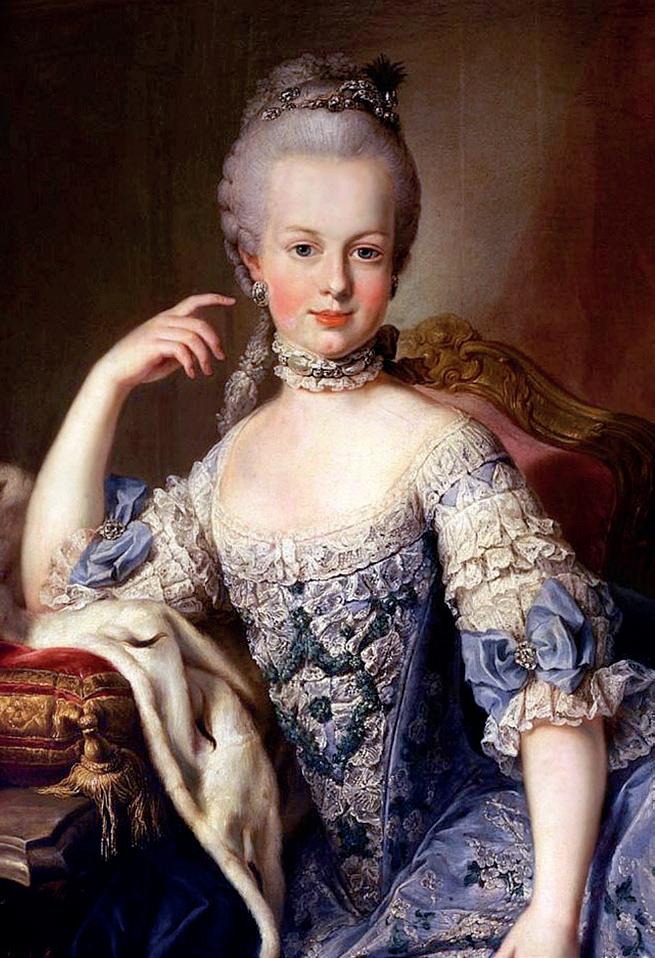
Nicholas II
Marie Antoinette
Optimal global population
Upper Sixth Toby Medley
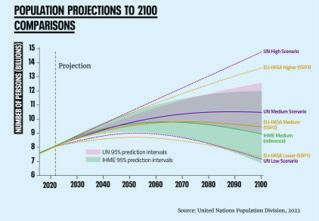
In the time it takes to read this essay, almost 2000 babies will have been born globally. Is this number sustainable? It depends on who you ask – politicians or environmentalists, economists or conservationists. Whoever you listen to, views and opinions taken on the optimal population are normative and contain inherent bias.
Carrying capacity, the maximum population size an environment can sustain indefinitely, has been discussed since the 1920s. Since then, the population has quadrupled. This perhaps symbolizes our inability to control population growth.
This graph may seem alarming at first. The historical data shows an exceptionally low population until only 1000 years ago. The recent exponential rise may appear unsustainable. Furthermore, projections show the population could vary from 7 to 14 billion people by 2100. The outcome is sure to change the way the world works.
Throughout the last century, scientists have speculated on our carrying capacity, most famously Paul R. Ehrlich. His 1968 book, The Population Bomb, set out his pessimistic view of future food security. He envisaged hundreds of millions starving in the 1970s. This did not happen. This contrasts with Julian Simon’s view of cornucopianism, and the role of technology in allowing continual population growth.
The main factor discussed in this essay is sustainability. This is the meeting of current needs without compromising the ability of future generations to meet their own needs. Therefore, this essay will explore the case for a high and low population, analysing each in terms of sustainability.
The case for a high population can be continued on from Ehrlich’s scenarios. The opposite of what he suggested came true. Famine has become rarer; the last major occurrence was in the 1960s after China’s leader, Mao Zedong, enforced communism on his farmers and caused the worst famine in history, starving 30 to 45 million people. What Ehrlich failed to acknowledge is the role of geopolitical stability. The nine million people who die every year from hunger often die due to civil unrest. For example, the current famine in Sudan is almost solely due to the civil war that restarted in 2023. The government broke down, supply chains are all but destroyed, sparking the crisis, which repeats itself time and time again. This has caused nearly eighteen million to face acute hunger, while over 380 million people worldwide have type 2 diabetes. Similarly, 30% of food globally is wasted and a reduction in this figure would increase our carrying capacity; this number is 40%
in the US. Perhaps we should focus on reallocating the resources that are unfairly distributed.
When focusing on the economic argument, inequality is central. G7 countries have 27% of global GDP but only 10% of its population. If income were evenly distributed, logic suggests everyone would meet their basic needs. A famous equation can be used here. I=PAT, where I is human environmental impact, P is population size, A is affluence, and T is technology.
This suggests the high income per capita in the West may be the reason for global environmental impact. However, technology may be able to increase the global carrying capacity. This is because efficient production and consumption of goods reduces the resources we use. With the move towards renewable energy, it is inevitable that per capita fossil fuel usage will reduce.
The disadvantage of using I=PAT is that each variable is not independent, and each component is hard to weigh and express as a single figure.
Mao Zedong... caused the worst famine in history, starving 30 to 45 million people.
Most people would agree living standards have improved over the long run. Trends show since 1820, extreme poverty has reduced by 89%, vaccinations have increased from zero to 81%, and literacy, education, and child mortality have all improved. Development would not have happened on the same scale without population growth. A larger population means there is a larger workforce, boosting the economy. This gives each country more ability to meet its own needs and help other countries that may lack the economic conditions necessary to thrive. For example, the UKs trend of Official Development Assistance (ODA) has increased year on year in line with economic growth, which would not have been possible without population growth.
The main reason politicians refuse to discuss overpopulation is the promise of
Future Projections of Human Population
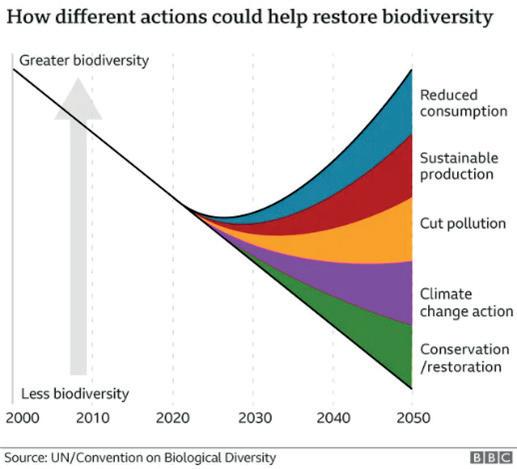
economic growth. A growing population will increase consumption, which in turn increases demand for goods and services in the economy; the labour force increases, increasing output. This causes economic growth. This has many benefits to society, such as a rise in real incomes and living standards, and the increased ability of governments to provide public services. A good example of this occurred in China, from the 1980s onwards. Population rose from 981 million to 1.4 billion is 2022. Contrary to Ehrlich’s predictions, this did not lead to famine. GDP per capita rose from $312 to $12,700 today. China has experienced low inflation and unemployment despite its population rise.
The environmental and social costs of population growth can be high. Since 1880, both the population and the average global temperature have risen. This is due the technology component of I=PAT. The invention of electricity opened the doors for burning of fossil fuels on a grand scale. The burning of coal has directly led to temperature rising by 1°C since 1880. It is expected to rise a further 1-5°C by 2100.
Population growth can devastate the environment. The rate of warming is now so high that species are unable to adapt fast enough to the changing climate. Given that plants are primary producers, this can break down food chains. In the graph above, the steep gradient shows the rate of mammal decline, catalysed by global warming and habitat loss – both results of population growth. It was found
from 2000 to 2008, 1% population growth correlated with the emission of 2.5 kilotons of CO2 in western Europe. 2.4 billion people are exposed to dangerous levels of household air pollution, occurring mainly in developing countries, such as India and on the African continent. This is a vast number of people, which, it can be argued, has only occurred because of mass overpopulation and overcrowding.
Although we have mentioned the economic benefits of a high population, the example of India perhaps best shows it can have a negative impact on social welfare. Seven million people die prematurely every year due to pollution, and slums such as Dharavi, in Mumbai, exemplify this. Lung cancer, tuberculosis, and asthma are common among residents, and it is estimated there is one toilet for every 1,440 people.
In India and around the world, 30% of people don’t have adequate housing. High house prices, poor education, and an excess supply of labour symbolise the dangers of overpopulation. Many would argue it’s the rate of growth that is the issue. People are migrating and being born too fast for government to control. An important fact to remember here is that the distribution and composition of the population matters. Although the high population density in slums is responsible for the poor living standards, with sufficient government planning, slums could be avoided even with a high population. In context, the average American consumes 3.3 times the food and 250 times the clean water that are actually required as basic needs.
The case for a low population focuses on environmental factors. A lower population will inevitably reduce demand for goods and services. Industrial production will decrease and so its impact will reduce. More land would be free for wildlife to thrive, and global emissions would be lower. Less space would be used for housing, factories, and infrastructure, allowing wildlife populations to rebound. Ceteris parabus, total waste will reduce, decreasing pollution in landfill and waterways. It is clear our impact on the world we inhabit would reduce.
One caveat is the ‘ceteris parabus.’ A lower impact based on lower population than today assumes that environmental impact per person doesn’t increase. Lower population will increase resources available per capita and so affluence may increase, which increases environmental impact. A study of fertility scenarios in India found for the projection of low fertility, income per capita would rise 15%. This suggests a fall in population size will increase disposable income, output, and environmental impact. However, reducing the birth rate is the only way to lower population. This causes an ageing
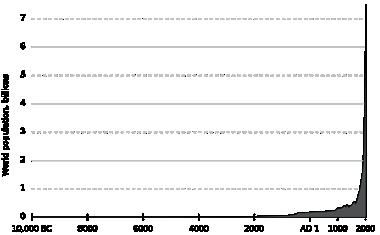
How Reducing our Impact Could Increase Biodiversity, Despite Population Growth
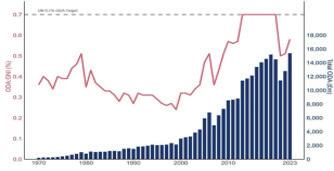
population, where there is a labour supply shortage. This can cause a stagnant economy, less investment by firms, lower government revenue, and lower income per capita. This can be seen in Japan, where real GDP has increased 7% in the 10 years to 2023 while population has decreased over 3%.
All other things being equal, Government revenue will fall if the population falls. Lower tax receipts limit the government’s ability to provide services, which may have a negative impact on the least well off because benefit payments will reduce. It also limits the government’s ability to protect wildlife and invest in green technology.
The social case for lower population begins with economics. A smaller population allows economic policy to be tailored more easily to the population, encompassing the wants and needs of a higher proportion of the population. There may be a shift from growth to living standards and happiness. This is observed in countries that top the world happiness report (WHR), including the Nordic countries, New Zealand, and Switzerland. All these countries have a low population and their governments’ focus is on wellbeing. Similarly, the World
Wellbeing Panel found 14-15 experts agree that smaller and more cohesive countries were happier. In addition, all top five happiest countries have ten million people or fewer.
Throughout this essay I have used the phase, ‘ceteris parabus’, or ‘all other things being equal’. This is a central issue in modelling. The simplification of scenarios and problems using models is exactly the issue. Other variables influence all my arguments in this essay. There is no way of experimenting with population to see the effects on the environment and economy, so we are left with comparisons between population over time, between countries, and using economic theory to suggest impacts of policies.
Some conclusions can be made. A redistribution of wealth and income is imperative for humans to sustain a high population. Firstly, the highincome earners overconsume, leading to environmental degradation. Low-income earners don’t have access to the education or technology that would allow them to use resources efficiently. For example, low-income countries are more likely to use coal for energy. In Brazil, some people are reliant on logging to provide income
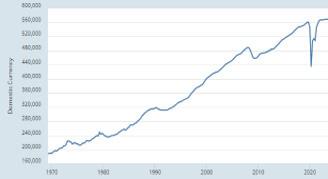
for their families. Secondly, this will positively impact economic prosperity. For these reasons, a high population could be sustainable.
A growing population is more likely to enable economic prosperity and has negative and positive effects on the environment and society. On the one hand, a high population will cause loss of habitat and climate change; it is associated with high population density, pollution, and poor living standards. On the other hand, economic advancements could increase our ability to tackle climate change and species extinction, improve standards of living, and reduce poverty.
Proposed policies I have mentioned require enormous global cooperation. To attempt to redistribute income on a global scale is almost impossible, because the rich tend to store their income where it is non-taxable; for example, 10% of income is stored in tax havens. Creating a world where all members live sustainably is just as difficult because of the income imbalance, lack of education, and promise of economic prosperity. It is unlikely that the world’s politicians would accept a cap on population, required to prevent continuation of the population boom we have seen in the last 100 years. China’s controversial one child policy is the most famous example of fertility control and many would argue this type of control is undemocratic and oppressive.
In my view, a balance is needed between environmental impact and economic development and so the optimal population is the maximum sustainable population where net zero emissions are met, the environment can thrive, and the economy can provide enough for its people. It is impossible to give an exact figure, and anyone who does would have to make huge assumptions on global technology and affluence, not to mention their own judgements on the relative importance of each factor. And so, perhaps there is no optimum global population?
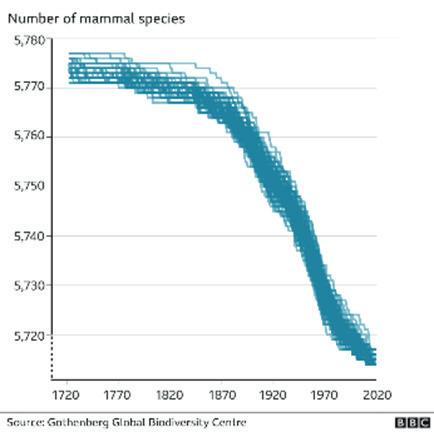
ODA level and ODA-GNI ratio showing a rise in overseas aid
The rise and fall of cakes
Zhara Ireland
Lower Sixth

Food is a critical part of our lives, and while for some cooking is a chore, many people choose to take an interest in it. They learn to cook well, experiment outside the recipe book, and enjoy family gatherings for the excuse it gives them to cook an elaborate meal or bake a showstopping cake.
Baking seems like a natural extension of cooking for someone interested in food, but it also attracts a different audience –one that might normally not be interested in cooking at all - that are just in it for the sweet treats and fond family-bonding moments. So, for many people, baking is a regular activity. But how many of us understand why each step in the recipe is the way it is? Why is there a difference between baking powder and baking soda, and why are you supposed to knead bread but leave pastry well alone?
Baking powder and baking soda are raising agents: they’re never added for flavour, they are only there to make sure your cake rises and has that all-important fluffy texture. The keen-eyed baker will have noticed that some recipes call for baking powder while others call for baking soda
– and while the difference may be subtle, there is a clear distinction when it comes to their chemistry. Functionally, the part that makes a cake rise is the same. Both ingredients contain NaHCO3, or sodium hydrogen carbonate, which reacts with an acid to form carbon dioxide, among other things. It is this carbon dioxide gas which expands in the heat of the oven to make your cake rise (however, beware adding too much, as it can compromise the cake’s stability and result in a sunken cake instead, which no one wants to have to serve to their guests).
The difference lies in the fact that sodium hydrogen carbonate, sometimes known as sodium bicarbonate, is exactly the same as baking soda, and is basic (alkaline). It will, in the heat of the oven (or more specifically, at about 80° C) decompose on its own to form carbon dioxide, water, and sodium carbonate. However, the lack of acid in this reaction compared to the one previously outlined means that only half the carbon dioxide will be produced, so you’ll only get half the rise in your cake. Perhaps the bigger problem here, however, is that in the process you will form sodium carbonate,
Na2CO3, which is strongly alkaline and will give your baked goods a yellow colour and bitter, soapy taste. So, if you’re using baking soda, you (or the author of the recipe you’re using) must make sure that there is an acidic ingredient elsewhere in the recipe for the NaHCO3 to react with.
Baking powder, on the other hand, removes the need for an external acidic ingredient to be taken into account by being what’s known as a ‘complete leavening agent’. It is comprised of ¼ sodium bicarbonate, and ¾ cream of tartar, an acidic filler. This means that baking powder is neutral, neither acidic nor basic, and as such can be used on its own with no risk of producing less CO2 than desired or producing sodium carbonate, Na2CO3. This begs the question as to why baking soda even exists as a product. If baking powder makes our lives easier, why do recipes ever feel the need to call for baking soda?
The truth is that there are many more acidic ingredients than we tend to think of. Sure, lemon juice, vinegar, and yoghurt probably all spring to mind, but brown sugar, honey, and cocoa powder can also
all act to neutralize your NaHCO3. This means that often, bicarbonate of soda is used intentionally to neutralize any acids elsewhere in the recipe, to avoid giving the baked good an acidic taste. Similarly, some recipes that already contain acids may retain their slight acidity by using baking powder to avoid neutralizing that acid. This might seem counterintuitive at first, but it is crucial in goods such as scones, where the acidity of buttermilk is integral to that distinctive scone flavour.
That’s all well and good when it comes to producing the CO2 we need to make our cakes rise, but that’s only half the battle. Gases naturally expand in the heat of the oven, so we need to make sure that our cake’s structure is strong enough to retain this CO2 and doesn’t just let it escape into the rest of the oven to give us a flat cake. This is the reason that many cakes are ‘creamed cakes’; the butter and sugar are beaten together first, before the rest of the ingredients are added. When butter and sugar are beaten together, the fat in the butter coats the sugar particles, trapping small air pockets around the sugar crystal as it does so. Then, when the eggs are added, they surround the fat and sugar with proteins, which will solidify in the oven to give the cake its structure. This creaming technique ensures that the cake is strong enough to contain the gas produced, but it also has one other benefit: it means that most of the heavy mixing of the cake
happens before the flour is added.
This is important as mixing flour in the presence of water (which can come from the tap, but also from eggs, milk, or honey to name but a few) leads to the development of gluten. This is due to two proteins contained within flour, gliadin and glutenin, both of which contain the amino acid cysteine. When mixed with water, the thiol (S-H) groups on the cysteine amino acids form inter-chain disulfide bonds (S-S). These disulfide bonds, along with many interchain hydrogen bonds (formed due to flour’s high glutamine concentration) give gluten its stretchy, elastic nature. But while the development of gluten through kneading is integral to creating a good loaf of bread, it is to be avoided in pastries and cakes. Overmixing cake batter once the flour has been added can lead to too much gluten being developed, and so the resulting cake has a tough texture. This is why creaming cakes is beneficial: in addition to ensuring the egg proteins surround the air bubbles in the cake, it also allows for most of the mixing to take place before the flour is added, thus avoiding overmixing and overdevelopment of gluten.
By refraining from kneading the pastry, we reduce the amount of gluten developed.
In pastry, the development of gluten is avoided in a slightly different way. The first step in most pastry recipes (although there are exceptions) is to rub the butter and flour together. This coats the flour particles in fat, which helps to inhibit any more gluten development than is necessary by creating a barrier between the flour, and the eggs that are added later. The issue of gluten development is also why pastry is only kneaded until the ingredients are just combined, and no more; by refraining from kneading the pastry, we reduce the amount of gluten developed and thus create a buttery, flaky, melt-in-the-mouth pastry.
These fundamental chemical processes underpin so many of the choices that are usually made for us when it comes to a recipe – from the precise ingredients chosen, through the order in which they are combined, to the methods used to combine them. It is, of course, not necessary to understand the chemistry behind a recipe to be able to follow the instructions and bake a cake. However, it can be incredibly interesting, and hopefully it has given you a sense of freedom or confidence to play around with a recipe or even create your own, now that you know the basic mechanisms of baking.

Monetary policy and its impact on the macroeconomic objectives
Adapted from the IEA 2025 Monetary Policy Essay Prize
Lower Sixth Finlay Thomlinson

Governments around the world aim to create stable economies to benefit their citizens. This is partly achieved through monetary policy, commonly delegated to central banks to separate it from fiscal policy and improve confidence in their decisions. Monetary policy refers to the instruments a central bank has to control the interest rates, and to the money supply to influence expenditure and achieve key macroeconomic objectives: controlling inflation, fostering economic growth, approaching full employment, and managing the current account deficit. These objectives are highly correlated, and central banks face the complex challenge of balancing them. Tools at their disposal include: controlling the reserve ratio; changing the base rate; open market operations (OMO); and forward guidance. In this essay, I will explore the mechanisms of these different instruments.
Prudential control is one way to control the money supply, it is the obligation of banks to maintain adequate liquidity. Central banks set the statutory minimum
reserve ratio or the reserve requirement (rr), defined as the percentage of deposits banks must hold in cash or highly liquid assets. Its effect can be explained by the circular flow of income model. Following an increase in rr, in the short-term, the leakage towards the financial sector remains the same, since households deposit the same amount; however, less of this money is injected back into the economy, since investment (in this case, money lent to firms by banks for investment into capital) is limited. Consequently, the money supply decreases as funds leave circulation. Equally, the central bank could lower this ratio allowing banks to lend more, increasing the supply of money.
Additionally, we can look at the equation of exchange (Newcombe, 1885), which states MV=PQ. This relates to the quantity theory of money, i.e. that the general price level is directly proportional to the money supply, where we assume that the velocity of money, V, is constant and that the growth rate, Q, is exogenous. To maintain stable inflation, the central bank should steadily
increase the money supply through regular decreases in the rr. However, in practice, cutting the rr has consequences. After the financial crisis of 2008, reserve ratios globally were increased to prevent a similar economic collapse. If banks hold more of their capital in illiquid assets, they are less likely to be able to pay out in the event of a bank run. With this in mind, central banks may be unwilling to lower the rr.
The central bank is responsible for setting the base rate – the rate of interest banks pay on central bank loans. Banks adjust their interest rates in line with the base rate. Firms borrow money from banks to invest in capital, hoping to make a return and pay back the bank, having made a profit. When the base rate is high and therefore the rate offered to firms is high, the cost of borrowing for firms increases and they are less likely to make a profit on their investment. In other words, their risk of making a loss increases, meaning the level of investment in the economy decreases. The interest rate also represents the premium that banks pay to households
on savings. With rising interest rates, the opportunity cost of consumption increases since households can earn more by depositing money into a savings account. Therefore, the average propensity to save increases and so the average propensity to consume decreases. The combined effect of less investment and consumption is a decrease in aggregate demand causing prices and output to decline.
The impact of base rate decisions can be limited by the effect they have on the exchange rate. As interest rates in a country rise, foreign investment increases causing an increase in demand for that currency. With a stronger currency, and thus more purchasing power, imports rise; however, exports become less competitive and decrease. Resultantly, the current account deficit increases. Furthermore, the increase in foreign investment can reduce the deflationary effect intended by interest rate hikes.
One of the drawbacks of changing the base rate is the zero lower bound (ZLB). Theoretically, when interest rates are at zero the central bank is in a liquidity trap where they can no longer cut their rates to stimulate the economy. Any further cut in interest rates would lead to consumers and producers holding cash in replacement of a savings account. In this scenario, other monetary policy tools would be required to stimulate the economy. Examples, such as Denmark and Japan, show that in practice this is not the case, however, due to the liquidity trap a negative nominal interest rate is not a permanent solution.










The Taylor rule (Taylor, 1993) is one of the models that can explain how the central bank decides on a base rate. Where is the policy interest rate, is the long run real interest rate, is actual inflation, is the target inflation, is actual output, is potential output, and and are constants that vary based on priority. As the positive output gap increases, ceteris paribus, the interest rate will rise according to the rule. This would work to disincentivise investment and decelerate growth to avoid overheating. Likewise, according to the rule as inflation increases from its target, h increases causing an interest rate increase. This would work to incentivise saving, causing disinflation.
The IS/LM model (Hicks, 1937) is another important way of looking at setting the interest rate. In the long run, when the goods market is in equilibrium, actual expenditure is equal to planned expenditure. From this, we can derive that investment is equal to savings. When interest rates decrease, firms will borrow and invest more, which leads to an increase in output. This causes the negative gradient of the IS curve. The LM curve shows the liquidity preference (the demand for money) in an economy against the money supply, which is assumed to be held constant. When output is high, transaction volume increases, meaning demand for money increases to facilitate these transactions. Therefore, the interest rates must increase to decrease the liquidity preference to maintain equilibrium in the money market. This causes the positive gradient of the LM curve. The two curves suggest different relationships between interest rates and output, and as such, by setting the interest rate at the equilibrium, the goods market and the money market can be satisfied.
OMO refers to the central bank's purchases or sales of assets on the open market to control the money supply. The various types of OMO play an important part in maintaining short and long term interest rates. Repurchase agreements, or repos, involve a central bank buying or selling assets from banks with a commitment to reverse the transaction later. This affects the banks' reserves changing the cost of credit in the interbank market helping to maintain the short term interest rate.
A more unconventional type of OMO is quantitative easing, or bank asset purchasing, which is used to affect the short and long term interest rate and the money supply. A central bank will purchase financial securities (usually, but not exclusively, government bonds) from financial intermediaries. This increases the liquidity of the banks, incentivising them to lend more and accept fewer deposits, done by lowering their interest rate. Lower rates mean an increase in borrowing and consumer spending. The combined effect of this is an increase in GDP and inflation. The potential to lower the short term interest rates means QE is particularly useful at the ZLB, where the base rate can be lowered no further.
To ensure that rates drop across the market evenly, central banks will purchase different asset classes from a large number of banks. That said, one benefit of QE compared to other forms of monetary policy is that the central bank can target specific industries to influence macroeconomic objectives in different sectors. For example, if the central bank wants to affect the rate of growth or inflation in the housing market, it can buy mortgage-backed securities (MBS). The market for MBS becomes more liquid meaning that banks will offer more mortgages to create new securities.
Quantitative tightening (QT) is the offloading of this ‘new money’. If the central bank purchased bonds, they can wait for them to mature and not reinvest. If other securities have been purchased, then they can be sold back to investors (a strategy that can also be used for bonds to offload them before maturity). The money is then debited from the account eliminating the ‘new money’ created. The Bank of England (2024) states that “The aim of QT is not to affect interest rates or inflation. Instead, the aim is to ensure that it is possible to undertake QE again in future”. This is true to the extent that QT is not an active tool. Following high levels of QE by the majority of central banks during the COVID-19 pandemic to try and stimulate the economy, large volumes of QT followed to offload the balance sheets. In this scenario, QT is a passive tool rather than an active one. However, this coincided with high inflation rates, raising the debate about whether QT is solely a passive tool. Regardless, central banks should unwind their balance sheets over a long period to avoid disturbing the markets.
In contrast, yield curve control can be used to affect the long term interest rate. Yield curve control is buying or selling government bonds at specific maturities to manipulate the price and therefore the yield; while similar to QE, bonds are purchased at a much slower rate. This causes a change in the shape of the yield curve (a graphical representation of the relationship between bond yields and their maturities). When there is economic growth the yield curve is described as ‘normal’. Growth coincides with inflation; a central bank is likely to raise the interest

rate in a growth environment. Investors demand a higher yield since the real return on their investments has decreased due to inflation and the opportunity cost of investing over saving has increased. In other words, investors require a greater premium for taking a long-term bond since they carry more risk from exogenous influences compared to short-term bonds. A flat yield curve shows that yields across maturities are similar, i.e. investors predict that interest rates will not change. This would reflect low economic growth and low inflation. An inverted yield curve shows investors predict a recession and
deflation. A practical example of this is Japan's 'lost decades', during which the BoJ implemented YCC to combat an inverted yield curve and persistent deflation (The Economist, 2024). By manipulating the shape of the yield curve the central bank can influence market expectations and therefore the interest rate that banks are willing to lend at in the long term.
Changing the base rate or the central bank’s open market strategy can create large shocks with negative and unwanted impacts on the market. To achieve the macroeconomic objectives, large market
shocks should be avoided, and this can be achieved through forward guidance. Forward guidance can be divided into two types: Odyssean and Delphic. Odyssean guidance is explicit, committing a central bank to a future policy. Delphic guidance explains the course of monetary policy in a more implicit way. Both are useful as announcements of future monetary policy decisions to disperse the effect of an intended change over a longer period, lessening its impact. In the specific scenario of the ZLB, forward guidance is particularly useful; an announcement that the interest rate will be kept at zero for longer may cause an increase in growth.
Central banks play an important role in modern economies and their ‘toolbox’ of monetary policy instruments is vital in steering the economy towards the macroeconomic objectives. However, there are drawbacks and, with so many unpredictable external factors and often unintended consequences, balancing monetary policy decisions is a challenging task.
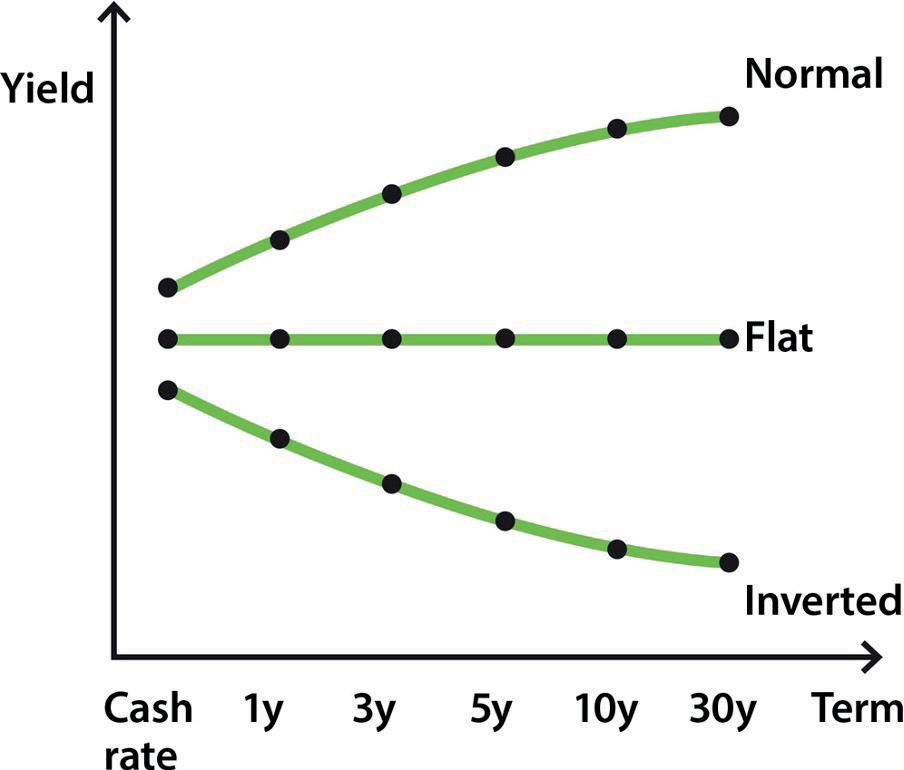
Investment equals savings derivation






Imogen Rengger (GCSE)
Olivia Greggs - Chess Table (GCSE)
Marna Stirling (GCSE)
Freya Wallace (GCSE)
Lottie Jackson (A Level)
Summer Jones (A Level)






Albert Wheeler (GCSE)
Lucy Clayden (GCSE)
Henry Murphy - Shooting Stick (A Level)
Torquil Morrison - Portable Barbecue (GCSE)
Jasmine Tilney - Tennis Skort & Top (A Level)
Thomas Love - Childrens Toy Box (GCSE)
Global Village: a creative writing piece
Sooz Marsh
Lower Sixth

From the moment I stepped into the enthralled gates of Global Village, I was instantaneously enraptured from a monotonous morning to a spiritual paranormal. My vision of reality was blurred, and the air was suffocated with the sounds of laughter and music, as visitors from all corners of the world came together to experience the aspects of global culture. The effervescent lights enveloped my surroundings and illuminated the shadows of several figures as they made their way from one attraction to the next. Like a kaleidoscope of colours, the pavilions of Global Village burst with the bright shades of different countries, each showcasing their unique traditions and cultures. It truly was a global village.
As my family and I sauntered past each country, a mesmerised emotion plastered on our faces, making it apparent that we were incredulous. The beaming sign read ‘China’ as we entered the oriental pavilion, offering a glimpse into the rich and diverse traditions of the Asian heritage. As I promenaded through Chinatown, it bustled like a beehive with activity, overflowing
with people, sights and sounds. The narrow streets twisted and turned like a puzzle, towered with vibrant red lanterns and energetic markets selling exotic goods from fragrant spices to handcrafted charms. The air was thick with the scent of roasting duck and boiling noodles which reminded me of my past adventures through the historical continent of Asia.
Exiting the entranced country, our subconscious minds guided us to the Moroccan pavilion after being magnetised by the extreme adrenaline abounding out. The gargantuan gateways protecting the Middle Eastern legacy were highlighted with blinding colours that ensured the tourists of Global Village were alerted with this wonder. My mum instantly gravitated towards the Moroccan Kaftan after catching a glance at the outstanding gold hints of the elegant cloth as it drifts in the wind like a dove. We zoomed in on the luxurious garments. The intricate detailing of the vivid thread rest on display. The jewels that engulfed the design struck a sense of wealth and prosperity as they glistened sharply. The strobing lights of the
traditional Moroccan Chaabi dance, that was occurring in the distance, reflected on the superlative jewels. The decorative detailing laying upon the cloth went from delicate floral motifs to rigid shapes devoured in blinding beads. Despite the differences between the people who visited, there was a sense of unity and solidarity that infused the air. As I looked around, I couldn't help but feel a sense of respect and wonder.
As we follow the alluring smells, we reach the culinary markets. The food was a true reflection of this diversity. There were vendors selling everything from curries to pastries, each one a tribute to the rich culinary traditions of earth. The aromas passing through the air were irresistible. Left to right, the food sampling kiosks were never-ending. Our senses were overwhelmed by the playground they were in.
We approached the culinary market and instantly a tantalising aroma voyaged towards us. The smell of rich spices, fresh coriander, cumin, and ginger caught me off
A birdseye view of Global Village
guard as the sound of sizzling meat hit the piping hot grill being cooked in front of our awestruck eyes. My mouth watered as I took my first bite of heaven. The explosion of flavours from the crispy spring roll sent my taste buds into hysteria. I took my next bite, this time dipping it in the tangy, sweet chilli sauce served on the side. The mixed flavours of the vegetables and the meat pirouetted on the tip of my tongue. The seasonings linger in my mouth a little while longer while I feel grateful for the appetising food I get to experience trying. Stall to stall, country to country. I felt like I was a tourist as I visited each country forgetting that I am in an abstract world and not on the opposite side of the planet. With every bite we were transported to a bustling market in Indonesia or to the inundated streets America. The humid air got hoarser as the heat turned up to cook the traditional cuisines internationally.
As we embraced through the vigorous crowds and colourful lights of the village, my eyes were immediately drawn to the mammoth Ferris wheel looking down on us. The lustrous lights of the wheel reflected off my family's faces, revealing the excitement and anticipation that we all shared. As we ascended into one of the Ferris wheel's bright red cabins, I felt a rush of excitement foldaway through my veins. The door of the cabin closed behind us, and the ride began to start, slowly at first, but then faster and faster as we climbed higher into the night sky. The Ferris wheel reached the top not too long after and my family and I gasped in awe at the breath-taking views. The Burj Khalifa standing tall in the distance contrasting to the moon that hung low, shaped like a
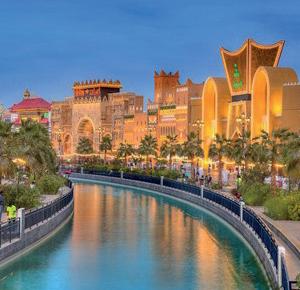
perfect crescent. It added a gentle glow to the countless skyscrapers the city held. We felt like we were on top of the world. Steadily, the Ferris wheel began its descent, my family and I held each other tight, laughing with ecstasy as we made our way back down to the ground. When we finally stepped off the ride, we were breathless and exhilarated with memories that we would cherish for a lifetime.
As we approached the exit, we were greeted by a cool breeze that carried with the scent of oud. We strode out into the open air and
met with an exquisite view of the Dubai skyline, its towering buildings glittering against the dark sky. As we made our way through the exit, we paused for a moment to take one last look at the exceptional Ferris wheel that had dominated the sight, its lustrously lit cabins spinning slowly in the cool night air, reminiscing on our previous adventure. The sound of music and laughter echoed through the air, and we could see people of all ages and backgrounds enjoying the vibrant atmosphere.

The Lights of Global Village
Pavillions in Global Village
Contradiction
Gabriela Cassidy Fifth Year

The best healers have been broken,
And the bravest have been crushed,
The best things are left unspoken,
The loudest have been hushed.
The brightest came from the dark -
But they learnt to find the light,
The passionate began with a tiny spark, You’re always wrong before you’re right.
There’s a beauty in the biggest beast,
The wise were fools once too,
The best have felt like they’re the least,
All the happiest hide something blue.
The past is what has shaped us – although none of us are the same –
But that’s what makes us wonderful – as from all darkness comes a flame.

The Night
Submission to the NATRE Spirited Arts Competition
Abilene Howells Fourth Year
Cynics told me:
‘The brightest light bears the darkest shadow’.
And so, I feared the light.
In a cloying dusk, there I idled
Slowly asphyxiated by My self-imposed silence. It
Hushed my mind
Crushed my spirit
Until I too was forced to cling
To the dull reprieve of the shadows. Where was The light?
A dying thought faltered against the oncoming tempest.
The cold burned. It shattered (Me.)
A mighty deluge claimed the rubble, Sparing not even
A vestige of what I once was. (Fallen.)
But,
In the pinnacle of my little dark age
I heard a lone voice of the highest calibre
Sing above the noise:
‘Why do you lie there, lost one?
The storm shall never pass
If you do not learn to dance in the rain.’
Blinding altruism would have drawn a laugh
From my death-pale lips
Had my spirit not been corrupted
So long ago.
Yet,
Under my ashen pallor
A heart flickered To life.
For the first time since the twilight I felt... (Something?)
The beat became metronomic, Steadily surging, urging me
To breathe. To fight.
(The onset of a new dawn?)
The beat soared, now a deafening battle drum Birthing a ferocious Ozymandias
With a furnace for a heart. Rage. Joy. Power.
I danced as the rain pounded my body. Rage
I laughed when I knew I was a lone voice. Joy
I roared louder than the rain ever could. Power
When, at last, my feet gave way
The ground held me, embraced me
But never swallowed me -
I am an absolute of myself.
I glared at the inked sky, no longer afraid
For now I was the light, burning into the darkness.
Rebuilding
Rotary Young Writer Competiton Finalist 2023 - 2024
Gabriela Cassidy Fifth Year

She looks at the dark, wounded soil That crumbles to dust beneath her feet, As the wind whistles through the broken wire The craters muddy in the wind and sleet.
The tortured earth seems to cry out in pain Of deeds done here not long ago, The rattling guns and screaming shells, That have melted away like winter snow.
She crouches down, digs into the dirt, Unflinching as the grime tars her hand, And there with warm, tender care She plants six seeds in the broken land.
Each day she watches, she hopes not in vain The valiant shoots that shudder at first, But as spring’s soft fingers stroke the field, Amongst the mud, sweet colours burst.
There, where the trenches wait in despair, There in the scars of sorrow and fear, Blues and yellows, pinks and purples –There in the wreckage, flowers appear.
She may not be able to rebuild the towns, Although, she is trying to do her part, She doesn’t know how to clear the wire, She cannot repair the shattered hearts.
But her flowers, although they are small, Make passers-by pause – just for a while, To see fresh beauty amongst the destroyed And begin to hope as they look and smile.
Dust to Dust
Awarded First Place in the Wax Poetry and Art Competition
Freya Wilson Lower Sixth

Mother smiles,
The falling rays gag her eyes.
She shields them from the brightness. Her eyes are swollen with numbness, Gaping as if dragged by their bags.
For six years we have come here
To this hilltop.
‘Run into the wind.’
The words fall from her lips And release me
So I run
Down the hillside I have known since birth Through the wind I understand Through the trees I know.
The breeze grasps my hands And pulls me.
Mother turns away Rests a hand on her hollow chest Her heart has left her today.
Depictions of sport in Hampshire, West Sussex and Surrey churches
William Baker
Staff

A seasoned church crawler will inevitably arrive at a church or churchyard that has within it depictions of sport. Typically, these depictions will be found on gravestones, in stained glass windows, or on hassocks. This article will highlight some of the better examples that can be found in churches within Hampshire, West Sussex, and Surrey.
In the far west of Hampshire, in the village of Burley, sits the church of St


John the Baptist. Built in 1838 in the reign of William IV, the church is home to the Applebee window. The window was commissioned in 1984 by the American friends of Constance Applebee [Fig 1], who had died a few years earlier in a nursing home in nearby New Milton. Constance was born in Chigwell, Essex, in 1873 and was brought up mainly by her great aunt. She graduated from the British College of Physical Education in 1899 and in 1901 she went to Harvard University, where she became famous for successfully introducing field hockey to the Americans. She was at Harvard to take a course in anthropometry (the measurement of the human body) at Dudley Allen Sargent's Summer School of Physical Training. After a discussion among her classmates and instructors about the British sport of field hockey, she took them to a courtyard behind the Harvard gymnasium and gave a demonstration. She toured the States running training courses in hockey and founding ‘The Sportswoman’ magazine. Later, she became Director of Outdoor Sports at Bryn Mawr College in Pennsylvania, a position she held for 25 years. In 1920, she moved to live at a cottage in Burley called The Withies, with her American friend, Mary Warren-Taylor, but still spent a large part of the year in America coaching hockey teams and even becoming an American citizen. Constance was also involved in establishing lacrosse as a women's sport in the United States. The U. S. Women's Lacrosse Association was founded at her camp in the summer of 1931, and Constance was inducted into the International Women's Sports Hall of Fame in 1991. Despite being a “deceptively gentle looking old lady…Miss Applebee, or, ‘The Apple’, as she was known, is remembered for her awe-inspiring instructions ("Now run, you dumb things!"), which rang over the playing fields…for many years… A Philadelphia matron with three grown
sons reported an occasional nightmare in which she stood rooted to the field with The Apple's caustic voice ringing in her ears.” (Sports Illustrated) Constance was still working at her hockey camps well into her 80s.
The window commemorating Constance’s life depicts St Catherine of Siena [Fig 2] at the top, standing with the purple mountains behind her from the hymn, ‘America the beautiful’; St Catherine is the patron saint of sport and spinsters, as well as many other things. She is also reputed to have received stigmata, which you can see her receiving through shafts of light in the bottom of the window. Of greater concern to us is the presence, in the margins of the window, of hockey [Fig 3] and lacrosse sticks, as well as apples and bees, a rebus of her name. When Constance died at the age of 107, she was buried alongside Mary Warren-Taylor in the churchyard in Burley.

Fig 1. Constance Applebee
Fig 2. Section of the Applebee Window at St John the Baptist, Burley, Hampshire.
Fig 3. Hockey sticks in the Applebee window
Fig 4. St Thomas the Apostle, Lymington

A short distance east, in the coastal town of Lymington, there is another window with a depiction of sport [Fig 4]. In the north wall of the chancel, at the Church of St Thomas the Apostle, there is a window depicting Christ with a modern family, designed by George Cooper-Abbs for J Wippell & Co., and installed in 1946. In the left of the two lights, a man holds a tennis racket, though he does not seem to be wearing accompanying modern dress.
A better-known representation of sport can be found in Winchester Cathedral, where there is a chapel devoted to the memory of Izaac Walton, author of the ‘Compleat Angler’, a paean to the sport, which was published in 1653. In this ‘Fisherman’s Chapel’, there is a stained-glass window that was installed in 1914, crafted by James Powell of Whitefriars. [Fig 5.1, Fig 5.2]
The window's design features four patron saints of fishermen: St. Anthony and St. Peter on one side, and St. Andrew and St.

Wilfred on the other. At the centre is Christ the Lord, depicted above the water. Below these figures are Gospel scenes, including the calling of Peter and Andrew with the inscription, "I will make you fishers of men", and the calling of James and John with the words, "Follow me." A central pane illustrates the resurrected Jesus by the Sea of Tiberias, accompanied by the text, "Bring me of the fish which ye have now caught."
Notably, the two bottom corner panes draw parallels between these fishermen disciples and Izaak Walton. The bottom left pane portrays Walton fishing in Dovedale, Derbyshire, while the bottom right pane depicts him fishing near the River Itchen, in Winchester, with St. Catherine’s Hill identifiable in the background.
The window also reflects Walton's favourite biblical text, "Study to be quiet," (1 Thessalonians 4:11) and a line in his book, “God did never make a more calm, quiet,

innocent recreation than angling”, which encapsulate his contemplative nature.
Walton may well have found time to fish in other Hampshire rivers such as the Meon, which winds its way through the village of Hambledon. Here, the rolling countryside and picturesque landscapes are characterized by lush greenery, gentle hills, and a rich tapestry of natural beauty. It was here, also, that the rules of cricket were first codified. Hambledon is often regarded as the "cradle of cricket" due to its significant role in the early development of the sport. The Hambledon Cricket Club, founded in the mid-18th century, became one of the most prominent and influential cricket clubs of its time. It is therefore of no surprise that in the village church, dedicated to St Peter and St Paul, there is, amongst its collection of hassocks on which the faithful kneel to pray, one that marks the village’s important connection to the global sport we know today [Fig 6]. This hassock, which was embroidered in 1990, depicts cricket as it would have been played around the year 1750, when the Hambledon Cricket club was formed, playing its games on Broad-Halfpenny Down. The wicket does not have a middle stump, and bats at that time were more akin to a field hockey stick in appearance. They had a curved shape with a long, narrow blade that was curved at the end. This design was more suited to hitting the ball along the ground, which was the primary style of play at the time. The handle was shorter and less distinct from the blade, often forming a continuous curve and the bats were made from a single piece of wood, typically willow.
One early member of the Hambledon Cricket Club was John Small, described as one of the greatest cricketers of all time. He had a large influence in determining the laws of the game and was involved in the decision to add a middle stump to the wicket as well as setting a maximum width to the bat. He scored the earliest known first-class century in 1768, when Hambledon played Kent. Visitors to St Peter’s Church in Petersfield can see his gravestone just to the right of the porch, partly hidden behind a tree. It seems to be the only grave that the Victorians didn’t move, thank goodness! Sadly, John’s wife and three young children predeceased him.
Over the border in West Sussex the intrepid church crawler has even more to enjoy. At St Nicholas, in Itchenor, there are images in the stained-glass windows of ice-skating and sailing [Fig 7]. Whilst argument may be had over whether these are strictly sports,
Fig 5.1. Walton fishing in Dovedale, Derbyshire Fig 5.2. Walton at the River Itchen, Winchester
Fig 6. Hassock at St. Peter & St. Paul, Hambledon

the sailing image depicts two similar sailing boats that appear to be racing each other, though in fairly calm winds. Given the position of Itchenor on Chichester Harbour, the hills in the background are possibly the Isle of Wight, and the two boats most probably X-One Design boats. These boats can hoist spinnakers, which might be what the crew of the second boat in the window is doing, but not on their present tack, which looks pretty closehauled (albeit there is no heel on the boats), creeping towards the windward mark! The windows are a memorial to Andrew Caldecott and were designed by the firm of Christopher Webb, in 1954.
In Lurgashall, West Sussex, the church of St Laurence possesses not one, but two, stained glass windows depicting cricket, with one of them also depicting stoolball, a bat and ball game. The west window [Fig 8] was designed by Philippa Martin, in 2000, and depicts St Laurence and local scenes. The church is located one big hit away from the village cricket pitch and a window of local scenes would be incomplete without some reference to it. The Millennium Window pamphlet explains: “Cricket, which has been played on the village green for centuries, is depicted by a wicketkeeper, batsman and bowler disappearing through the mists. A six has been sent to the border. The overshot watermill, which has now been removed from the village to Singleton Open Air Museum, is tucked in below the church with its spire stretching into the tracery with the old yew tree leaning in from the left”.

Edwards,

In the north transept there is a 1922 window [Fig 9.1, Fig 9.2] by Francis Skeat, titled, ‘Christ blessing children’, one of whom, wearing a blazer over his whites, carries a cricket bat, and a girl in the adjacent light carries a stoolball bat. Francis Skeat also designed a window in St Francis’ Church, Dudley, West Midlands, commemorating footballer Duncan
The church of St Mary & St Gabriel in South Harting, West Sussex, may be better known for its exquisite memento mori, but there are two hassocks that are of interest to the sports enthusiast. One of them is cricket themed [Fig 10]; like the window at

one of the ‘Busby Babes’, who died in the Munich plane crash in 1958.
Fig 7. St Nicholas, Itchenor
Fig 8. St. Laurence, Lurgashall
Fig 9.2 St. Laurence, Lurgashall
Fig 9.1 St. Laurence, Lurgashall

Lurgashall, the hassock depicts a bowler, batsman, and wicketkeeper, but there is an additional slip fielder too. The second hassock [Fig 11] depicts cricket, tennis, football, and stoolball. It is curious that of all the many sports in which people in this country participate, the relatively unknown stoolball should have a disproportionate representation; there is a further depiction on a wall hanging in Fernhurst, West Sussex, in the church of St Margaret of Antioch, which was designed by children of the parish. [Fig 12] The sport originated in Sussex and dates back to at least the 15th century. It experienced a decline in popularity in the 19th century but saw

a resurgence in the early 20th century, particularly in Sussex and Kent, where it is still played today in some forms. This, perhaps, explains why a surprising number

of examples can be found in these southern counties. Yet another cricket themed hassock, with a bright blue background and a solitary cloud, can be found at St Mary’s, Compton, West Sussex. [Fig 13]
A forty-minute drive from Compton, in the churchyard of St Peter ad Vincula, in Wisborough Green, is the grave of Sir Eric Parker [Fig 14], which has a racehorse’s head and two interlocking horseshoes carved into the stone. Sir Eric’s involvement in racehorse ownership made him a wellknown name in the racing world, with a legacy of supporting and enhancing the sport. A racehorse owner for 43 years, Sir Eric enjoyed major success on the flat and over jumps, including winning the 1991 Grand National with Seagram and the Whitbread Gold Cup with Topsham Bay.
At Holy Trinity, in Cuckfield, there is a modern grave that depicts a golfer [Fig 15] looking down the fairway after teeing off. There is an increasing number of gravestones depicting images in this
Fig 10. St. Mary & St. Gabriel, South Harting
Fig 11. St. Mary & St. Gabriel, South Harting
Fig 12. Wall Hanging at St. Margaret of Antioch depecting football and stoolball

modern style, often flowers or favourite pets, as well as sports and a wide range of other interests (at Thorney Hill in the New Forest there is one with a mobility scooter, and another elsewhere has a can of Foster’s beer!) These images, which make the graves less formal and austere, appear from the late 20th century onwards, either simply as fashions changed or perhaps due to a relaxing of regulations.
At Holy Trinity, Claygate, Surrey, [Fig 16] a grave from the end of the last century identifies the deceased’s passions for both fishing and cricket. One can certainly imagine the attractiveness of spending eternity fishing on the banks of a river, or listening to the sound of leather on willow on a summer’s day. This grave is also notable for a misspelling of the word mischievous [Fig 16.1] .


The final example, also in Surrey, is from Holy Trinity Church in Frensham [Fig 17]. It depicts a solitary bail, carved in relief, and below the person’s name are the words:
Opened
24th June 1951
Stumped
12th January 2010
Although a wider study has not been done, research at this stage suggests a preponderance of depictions of cricket in churches and churchyards, compared to other sports. This may be attributed to several cultural and historical factors. Cricket has been a significant part of English culture for many centuries; it

was widely played in rural communities and became a symbol of English identity and tradition, and this long-standing association made it a natural subject for commemoration in parish churches. Cricket has also historically been associated with notions of fair play (‘it’s just not cricket’), sportsmanship, and moral values, which align well with the ethos of the church, making cricket an appealing subject for memorials and dedications. Another reason may be that many villages and small towns in England had cricket teams, and the local church was often a central part of community life. The close
relationship between the church and the community meant that notable local cricketers were commemorated in the church, reflecting their importance to local identity. During the Victorian era, cricket was seen as a quintessentially British pastime and was closely tied to the moral and social values of the time. This cultural prominence translated into physical memorials in churches, as the sport was celebrated not only for its recreational value but also for its perceived role in character building. Muscular Christianity, which originated in England in the mid19th century, was a religious movement that promoted the idea that sporting prowess was a way to express Christian values and masculinity, further connecting sport with the Church. Additionally, until the 19th and early 20th centuries, other sports did not enjoy the same widespread popularity as cricket in England. Football, for example, only became a major sport later, and its association with different social classes and settings (e.g., urban working-class communities) meant it had fewer connections to the rural and village churches where cricket was celebrated. Cricket's leisurely pace and pastoral setting, like fishing, made it an ideal subject for artistic representation in stained glass, which often depicted scenes of rural life and community events. Other sports may not have been viewed as aesthetically or symbolically suitable for such representations. Despite the presence of many cricketing examples, the presence of such a wide range of sporting depictions in our sacred spaces allows us to consider their broader implications for understanding the role of sports in community and religious life.

Fig 13. St Mary’s, Compton
Fig 16. Holy Trinity, Claygate
Fig 16.1 Holy Trinity, Claygate
Fig 17. Holy Trinity, Frensham
Fig 15. Holy Trinity, Cuckfield

Fig 14. St. Peter ad Vincula, Wisborough Green


The Keys of the Kingdom Deciphered
Christopher Sparkes
Wednesday 24 September 2025
4:15-5:15pm
Refreshments from 4pm Garden Room
